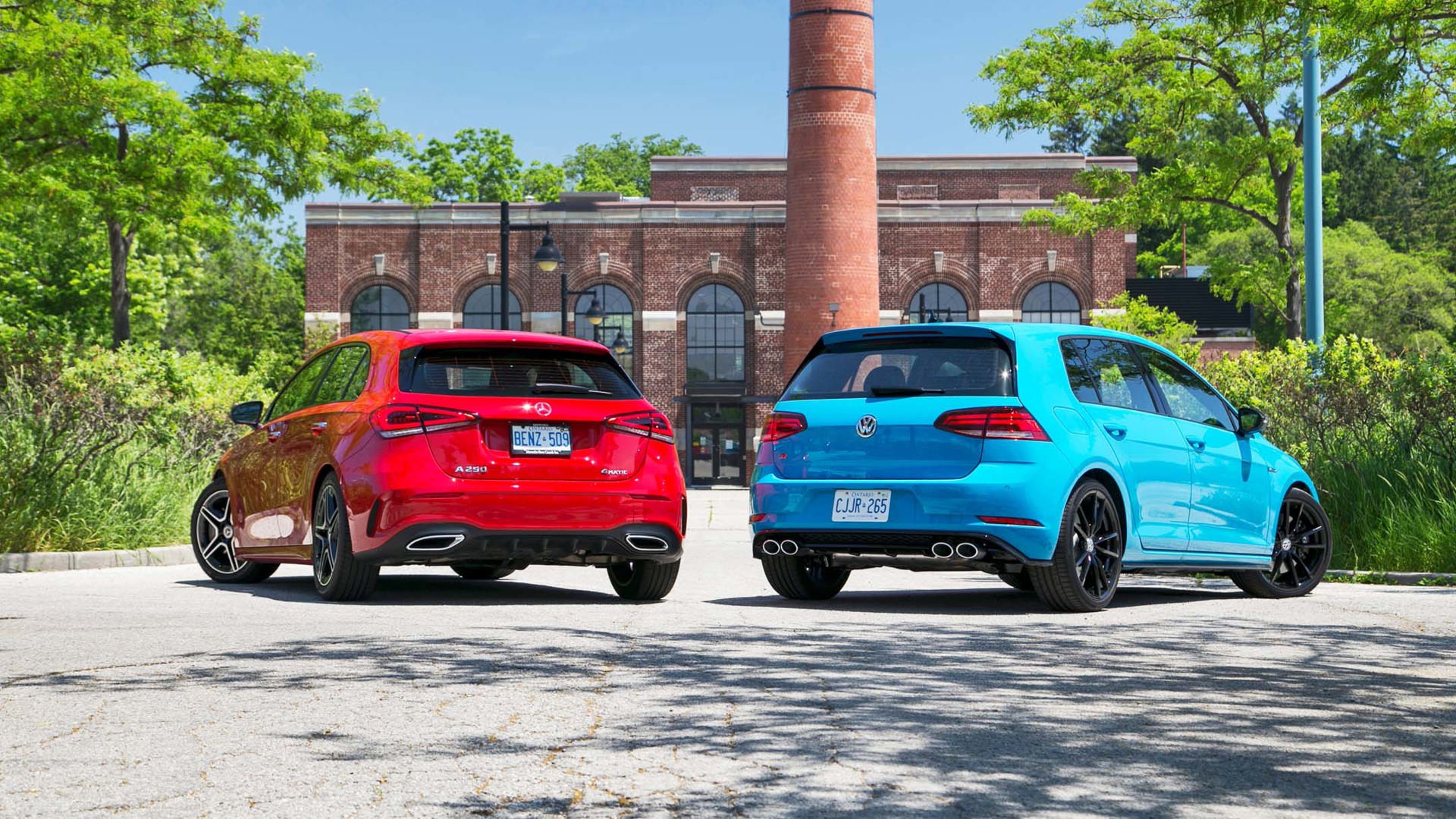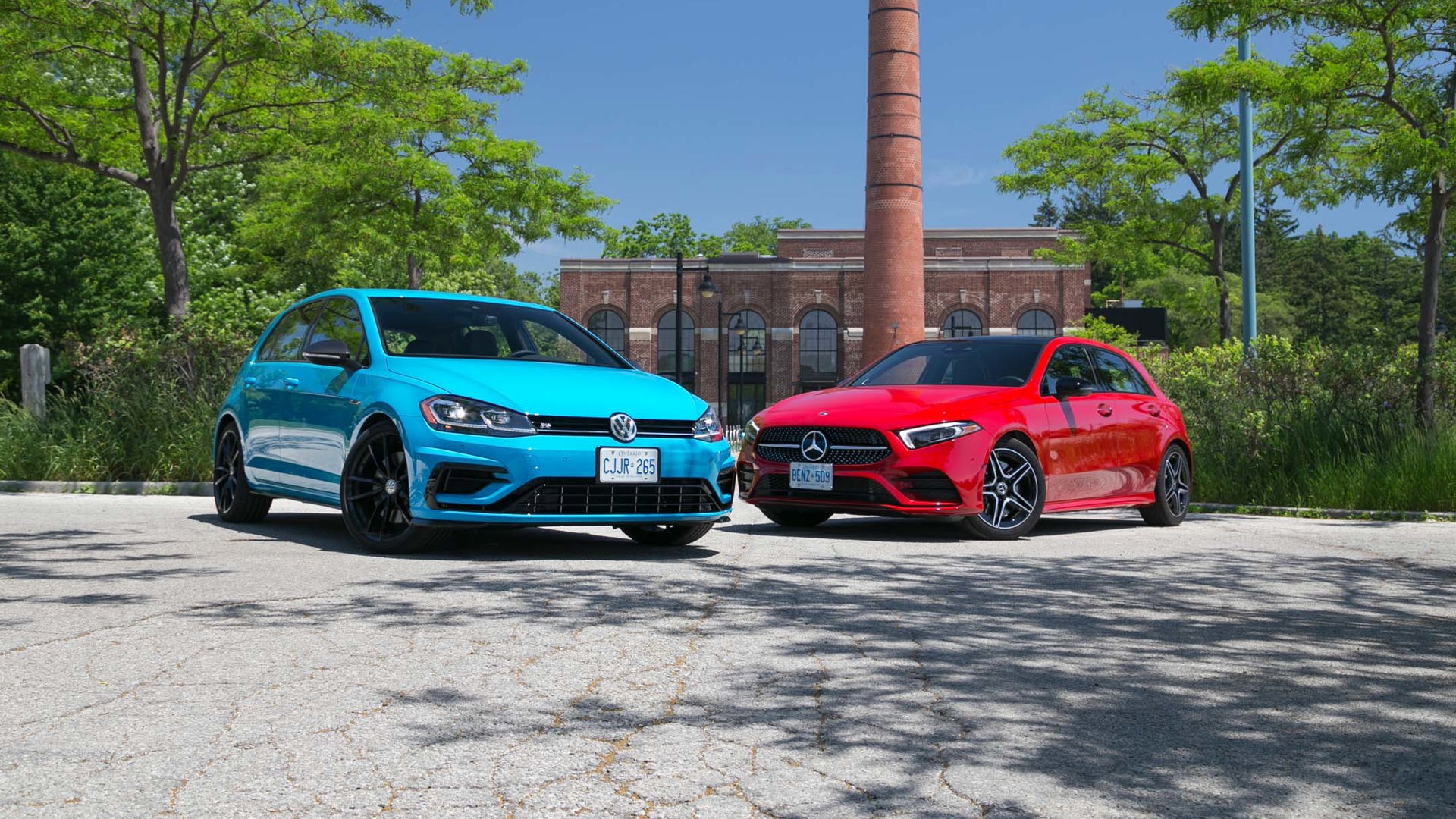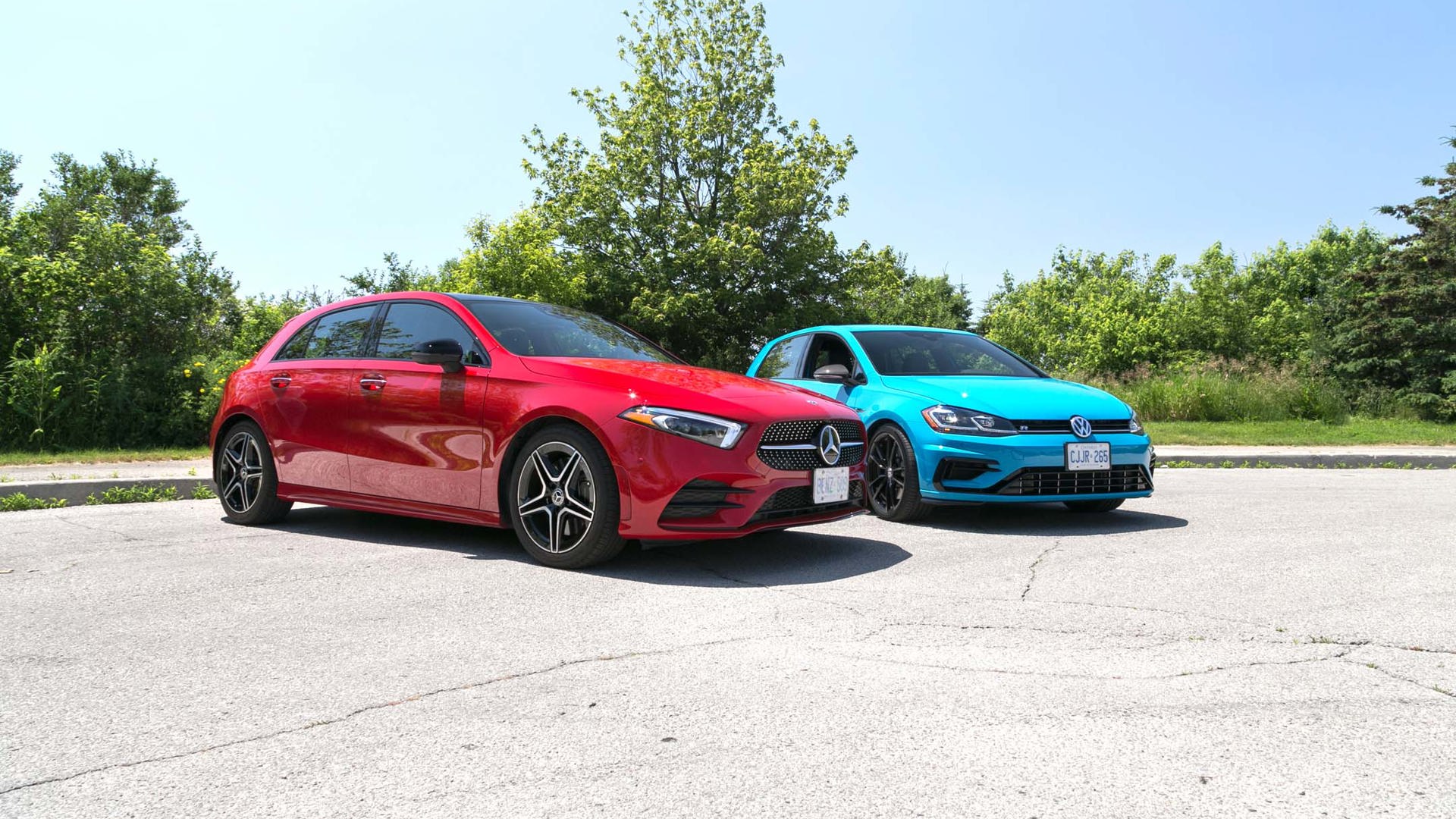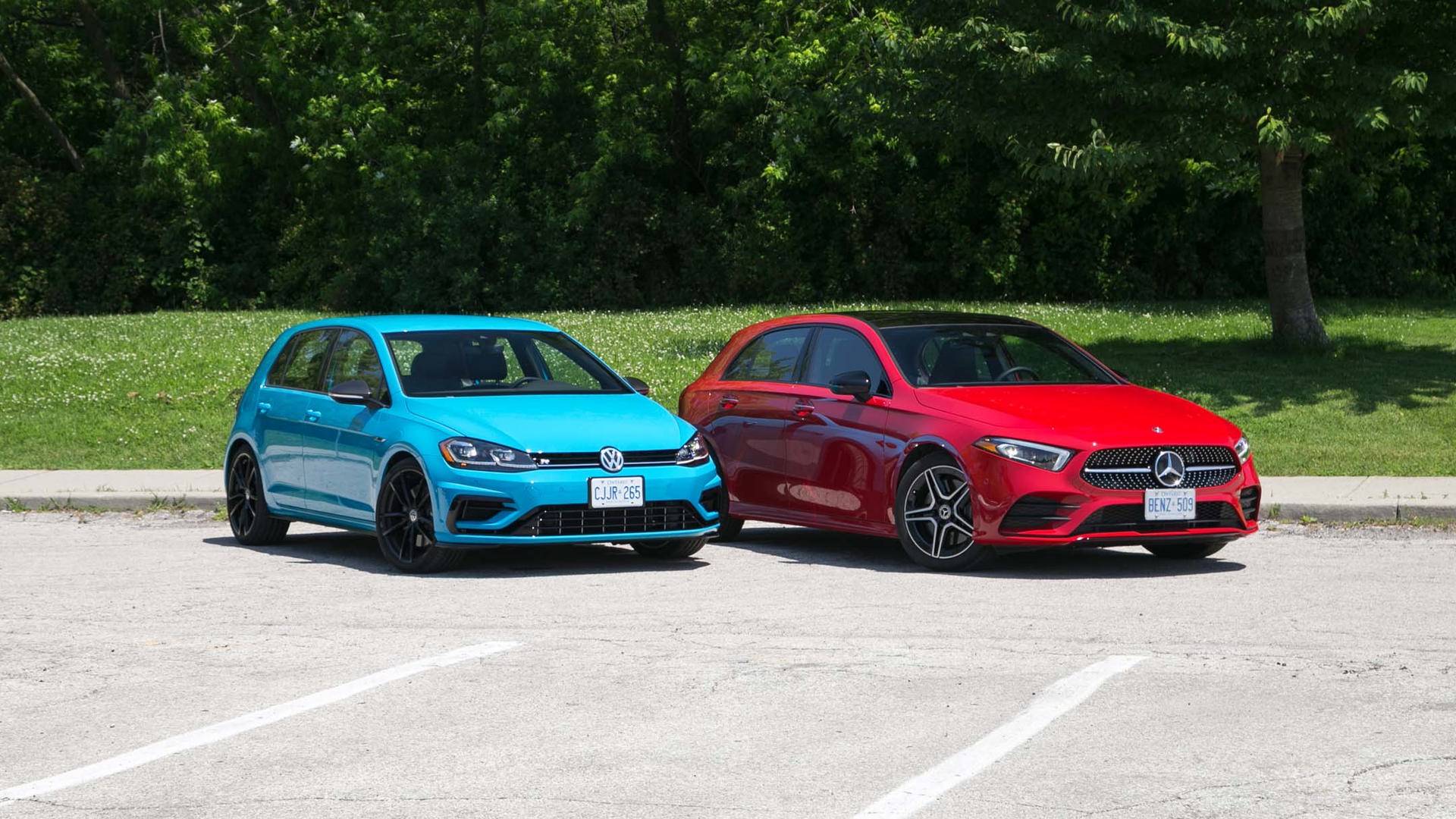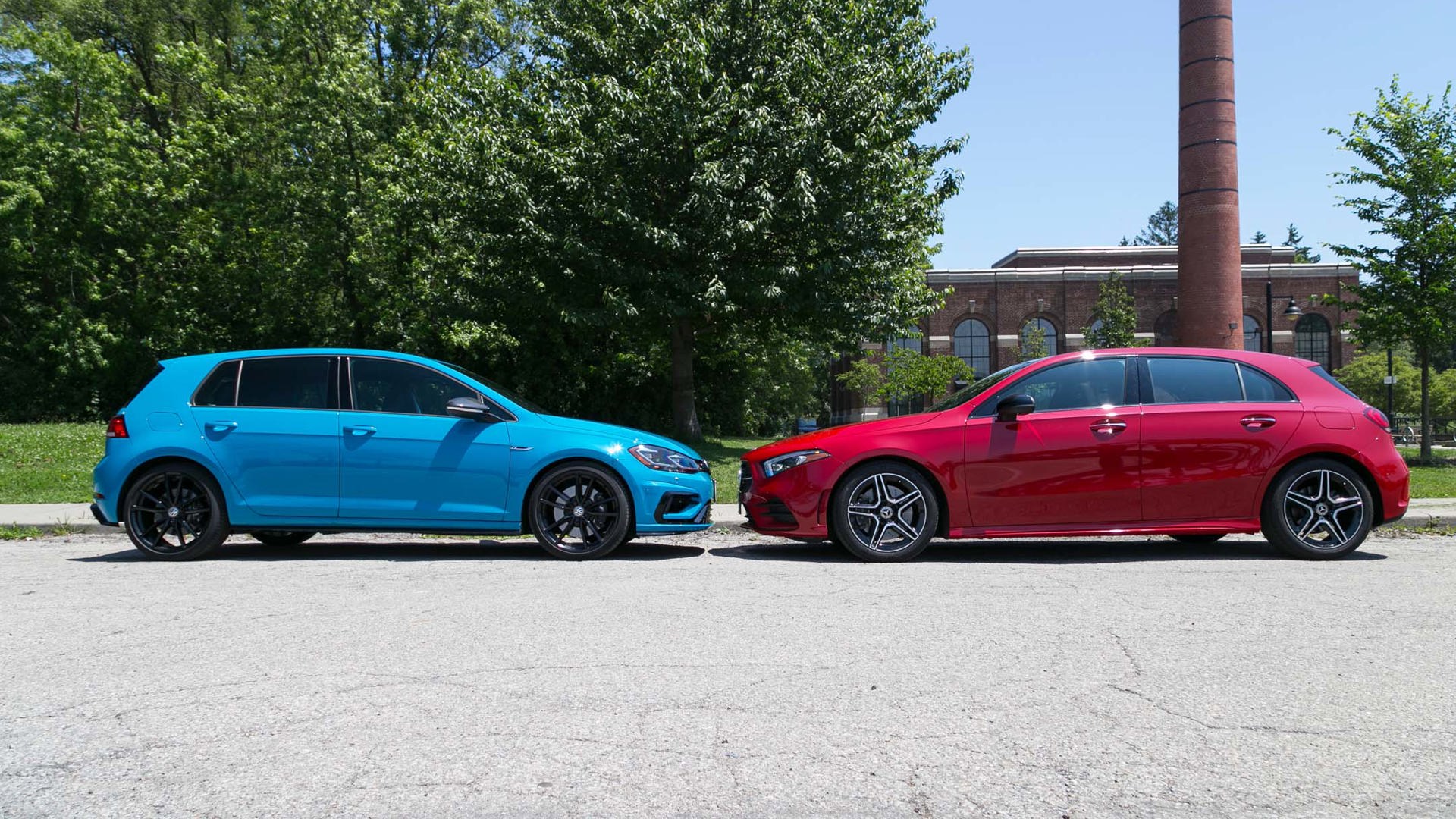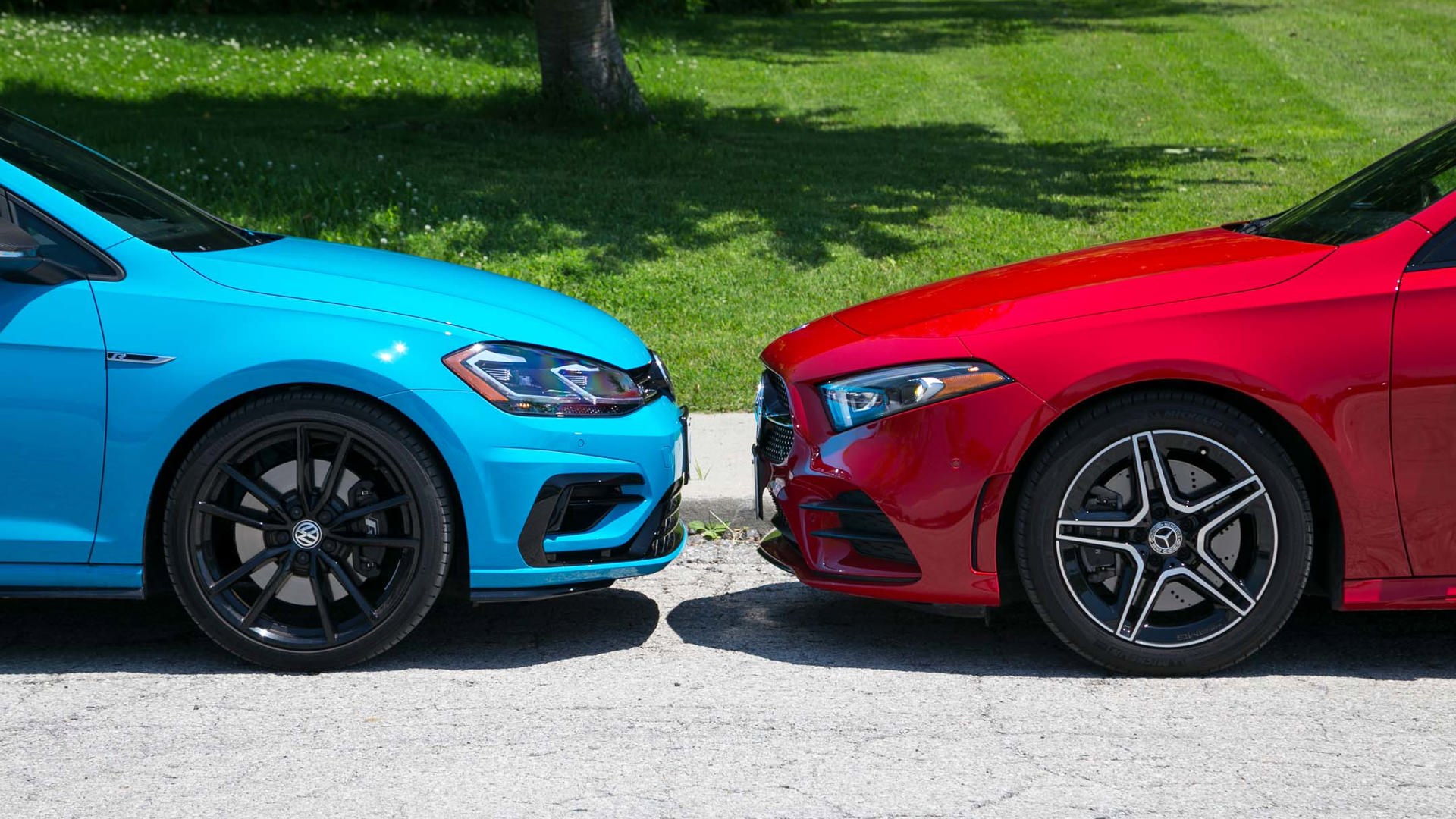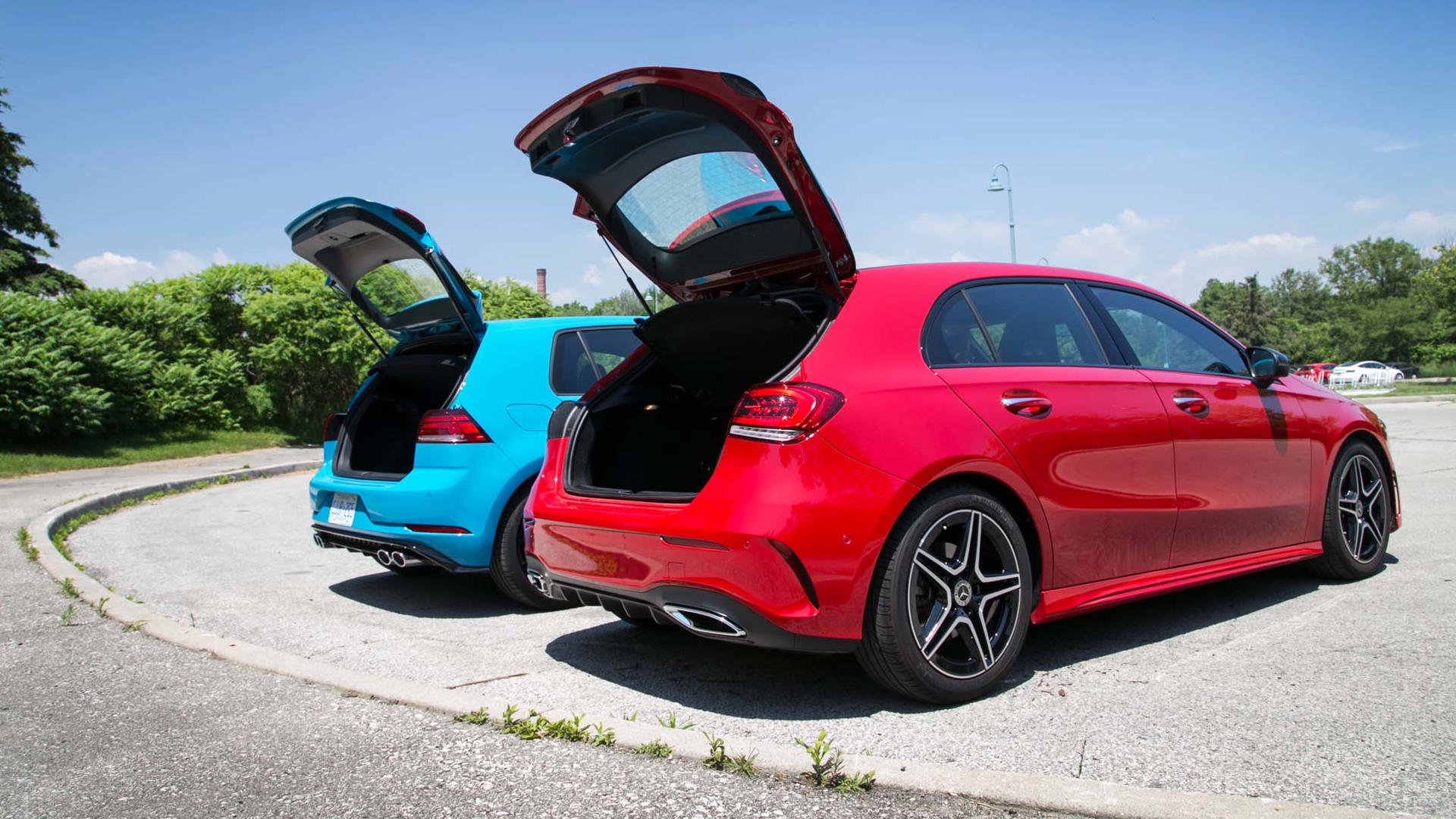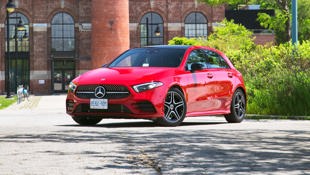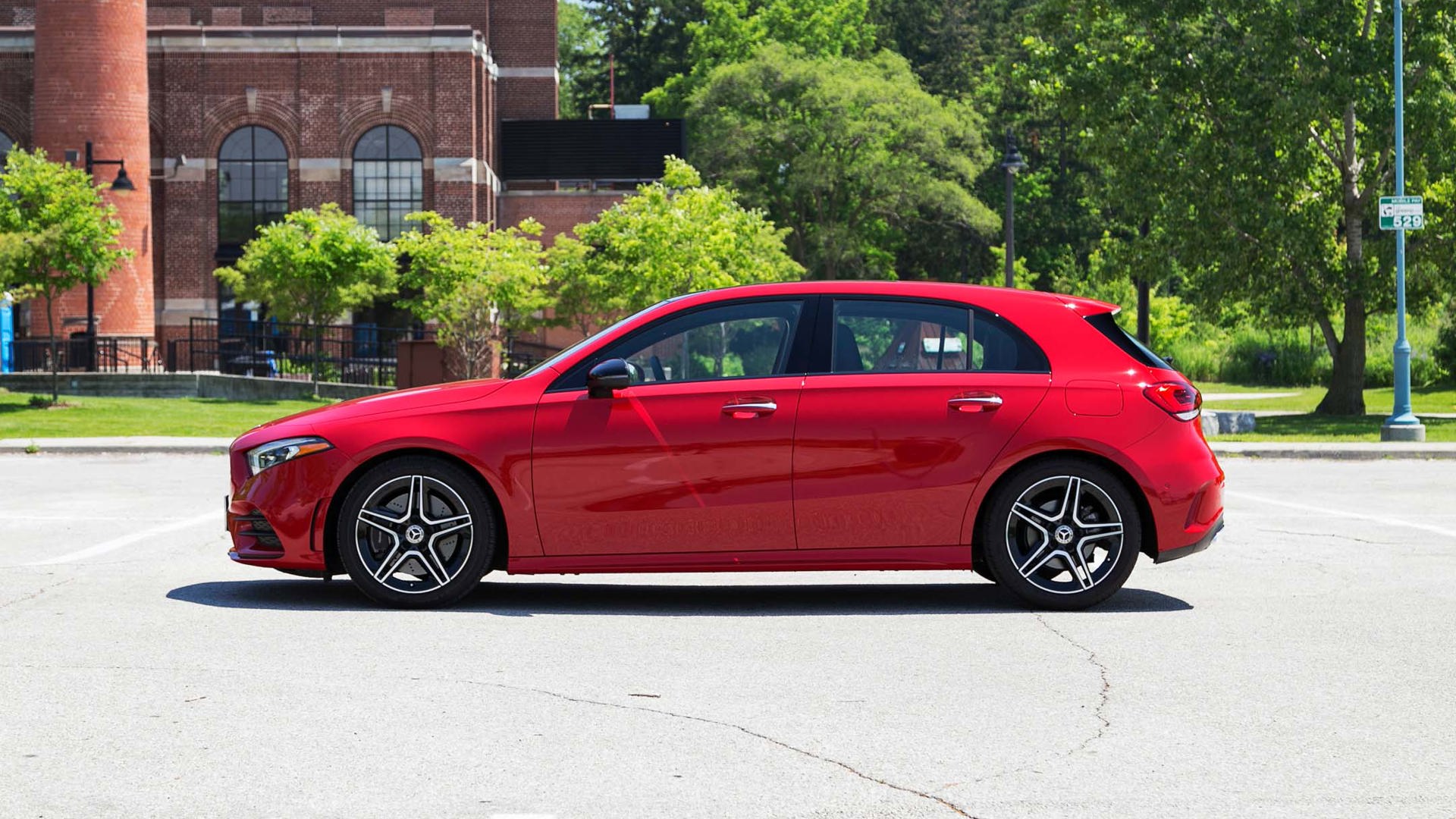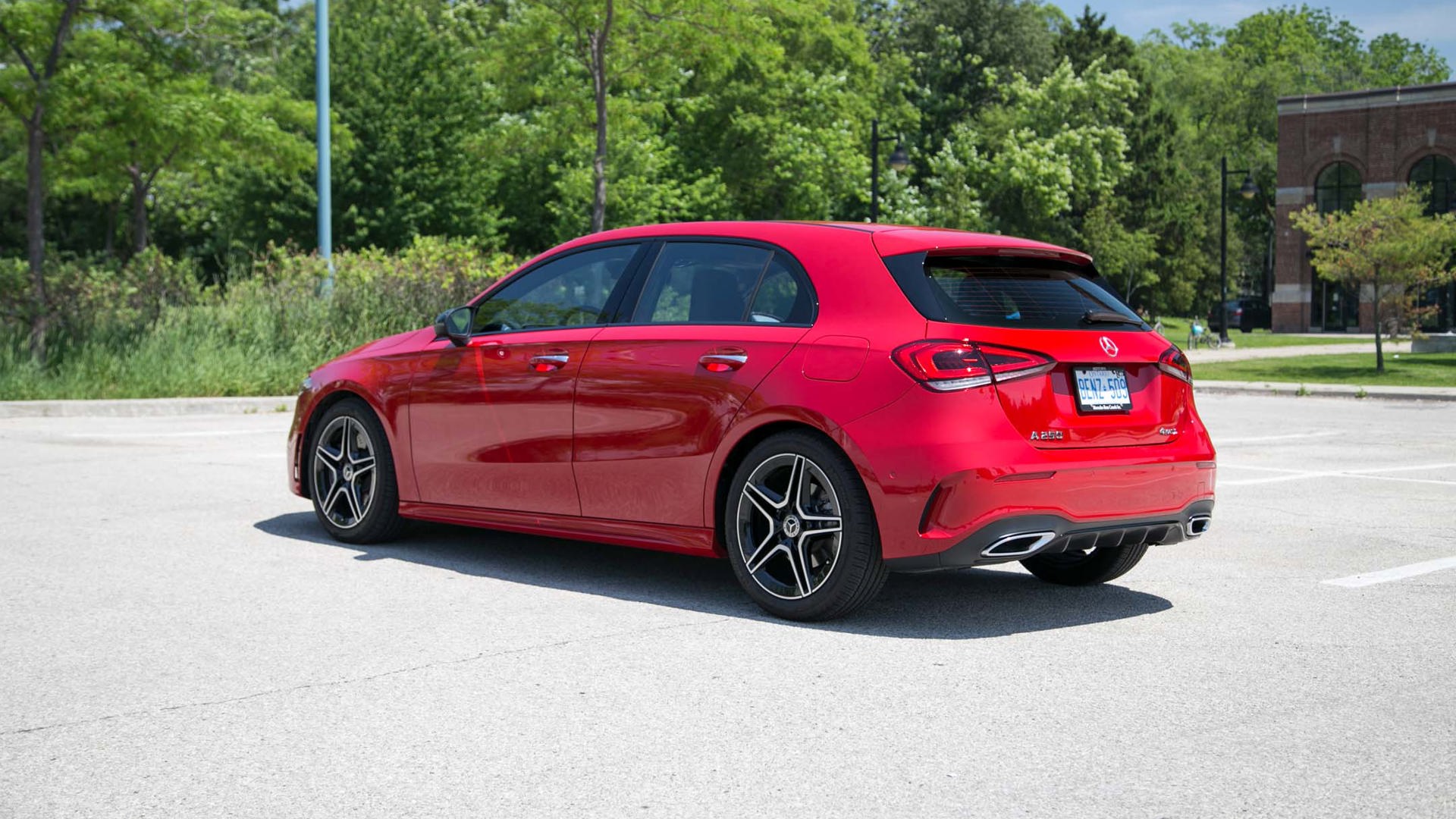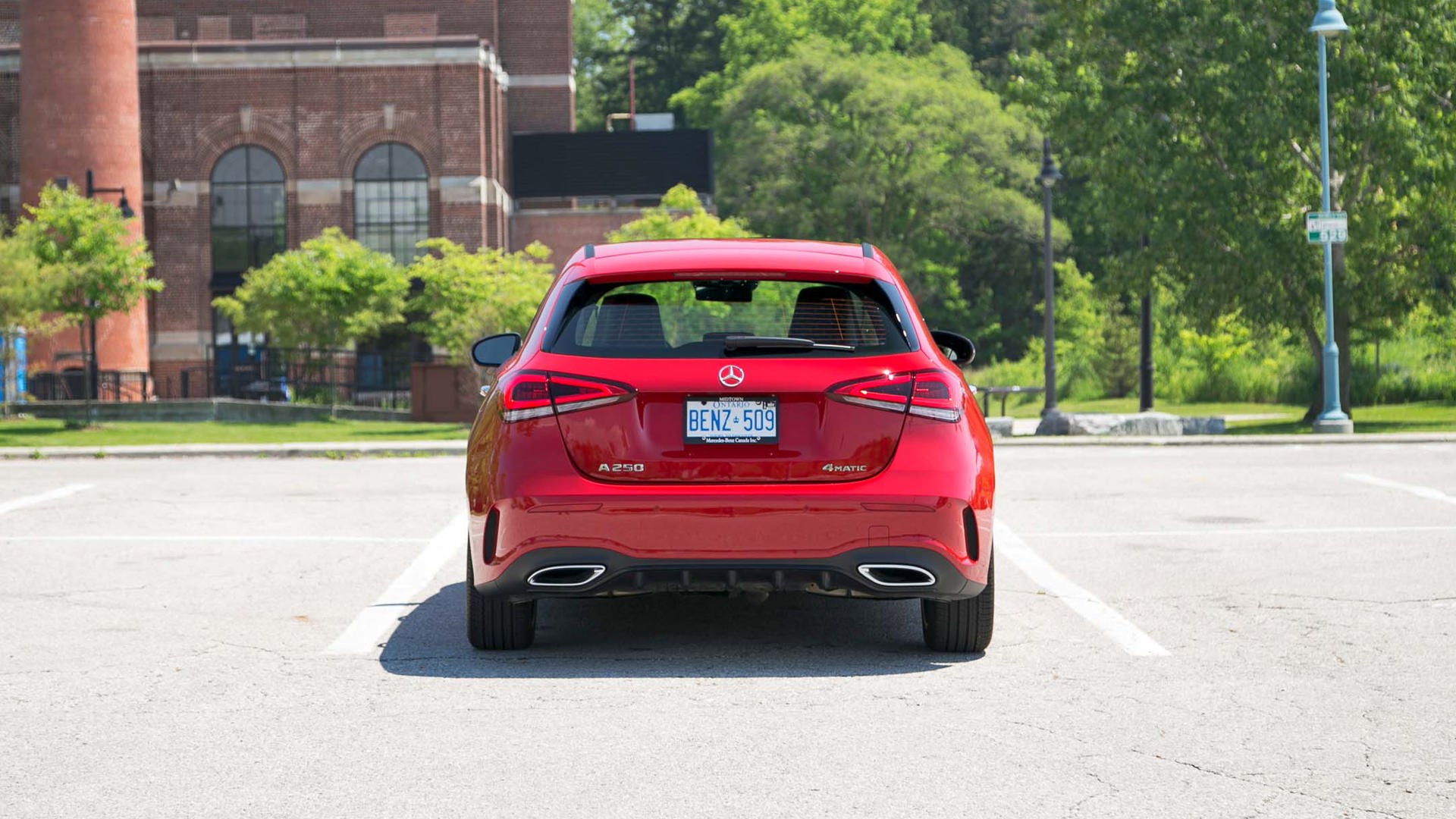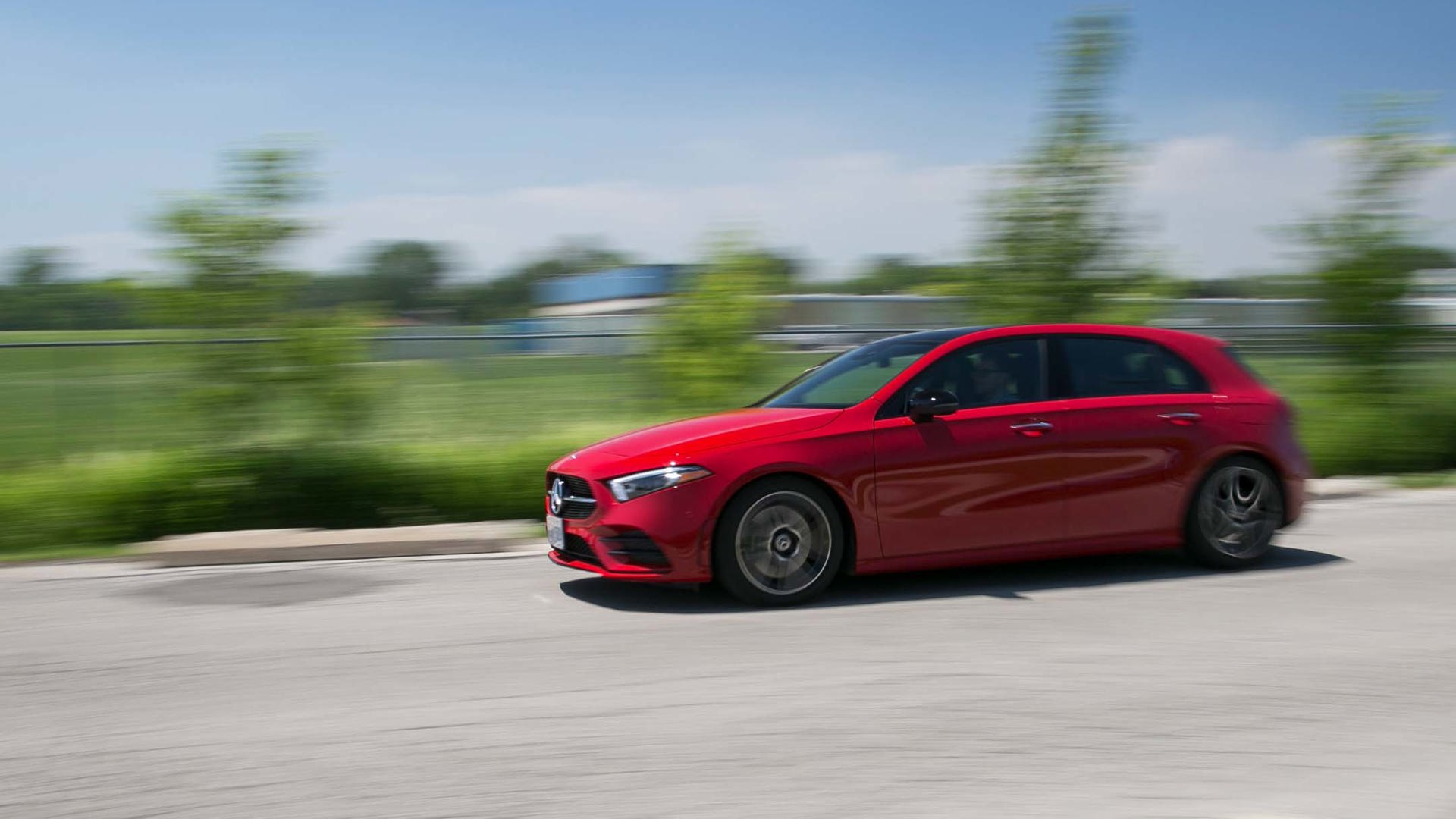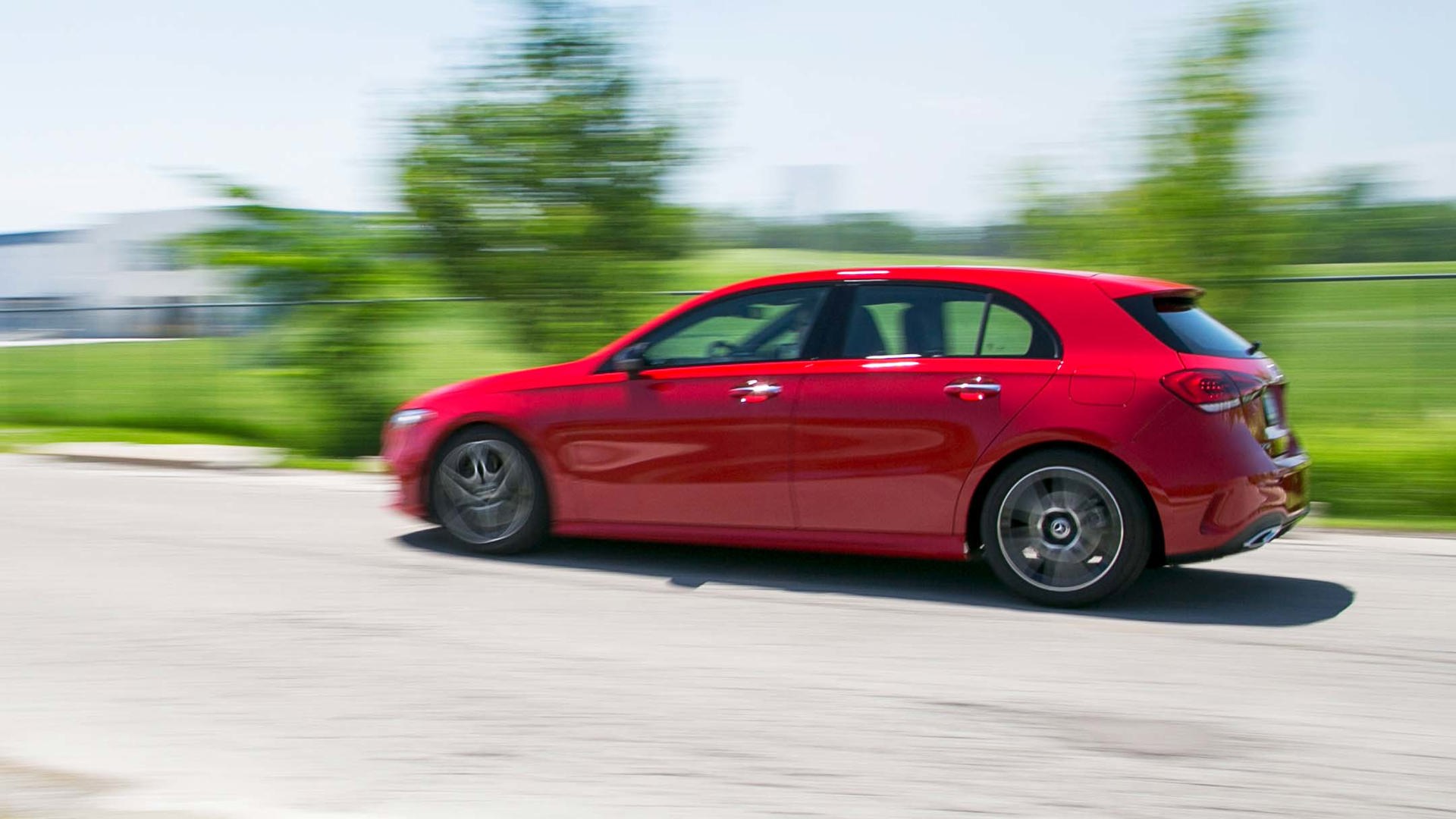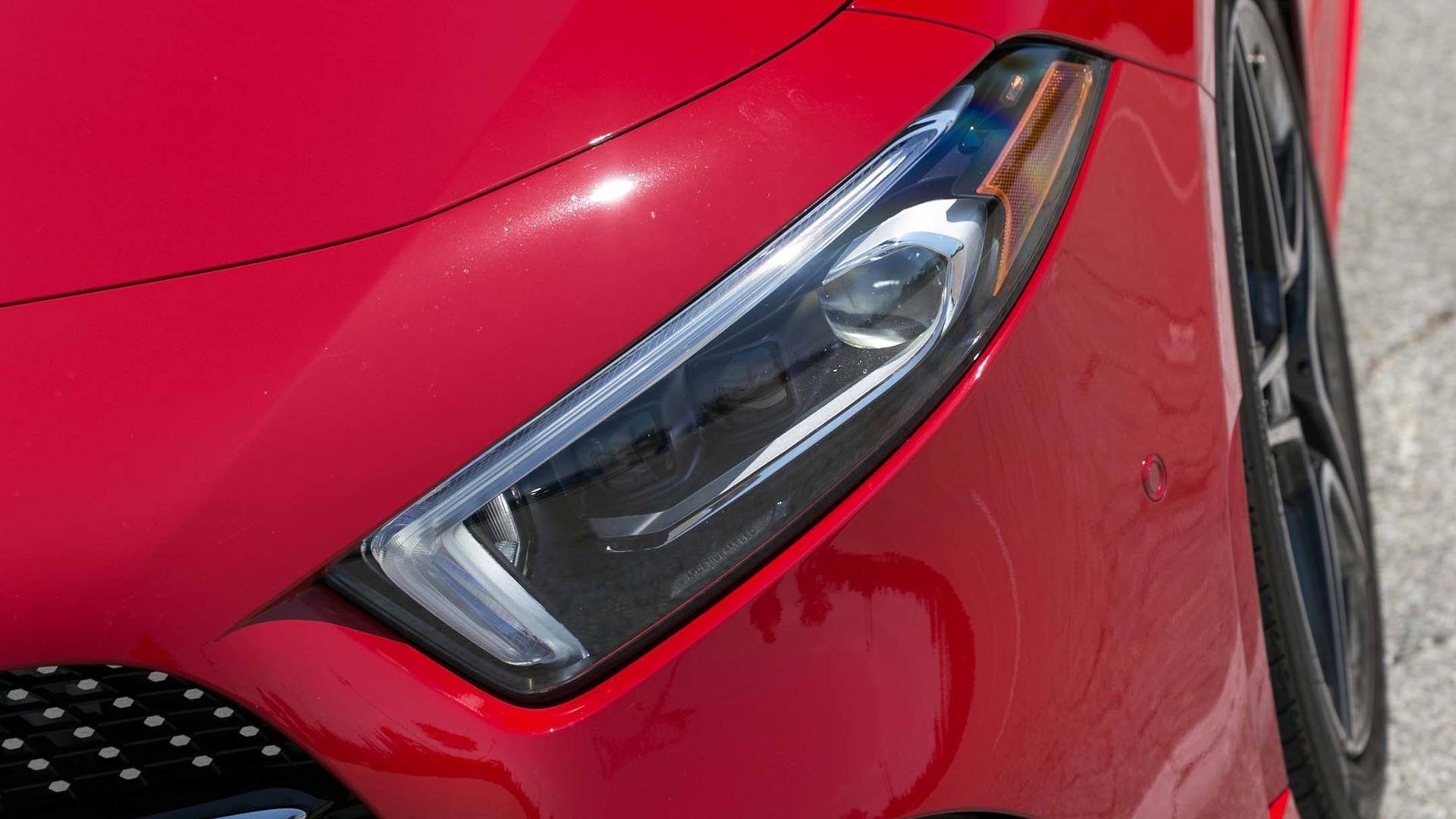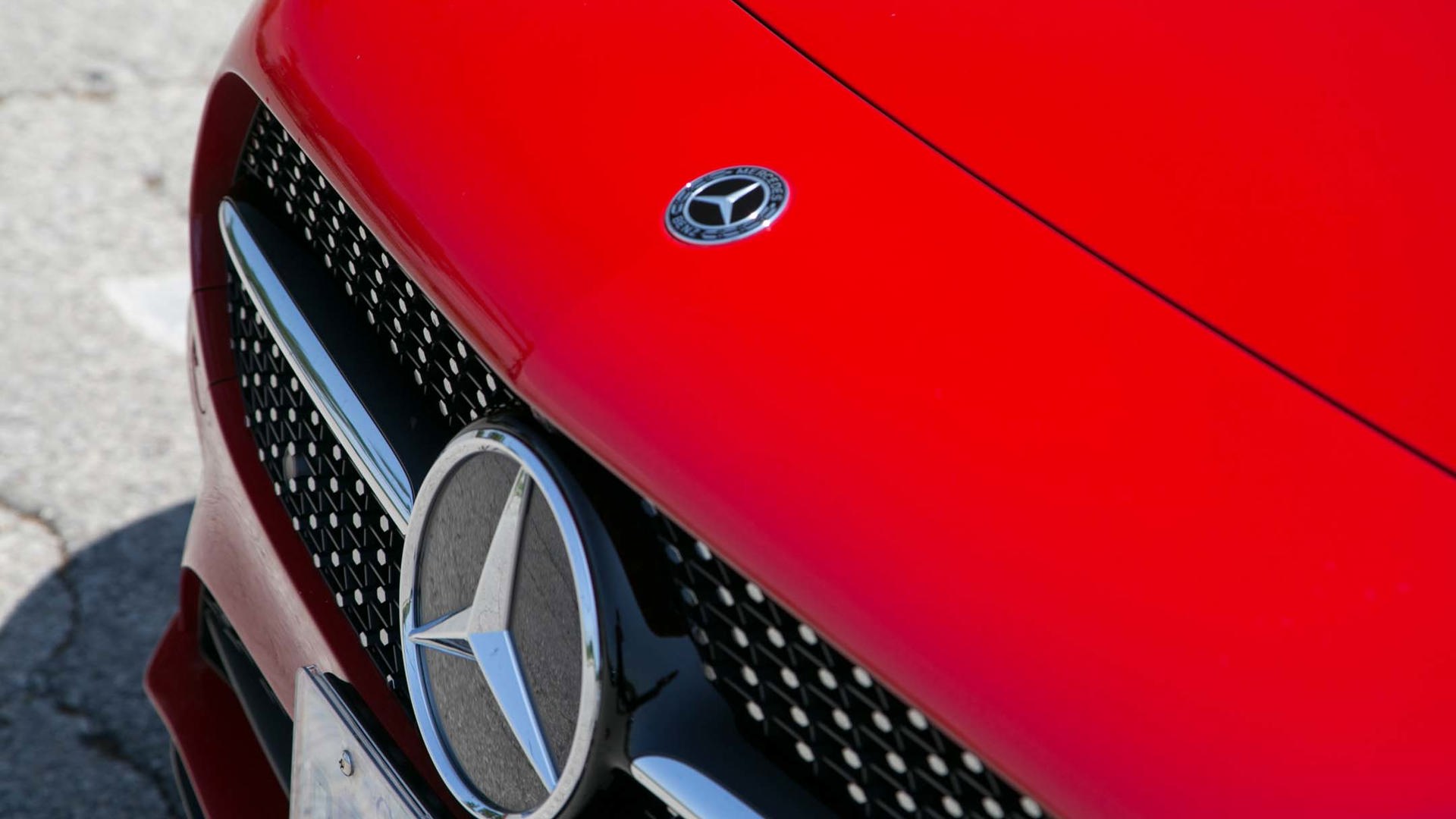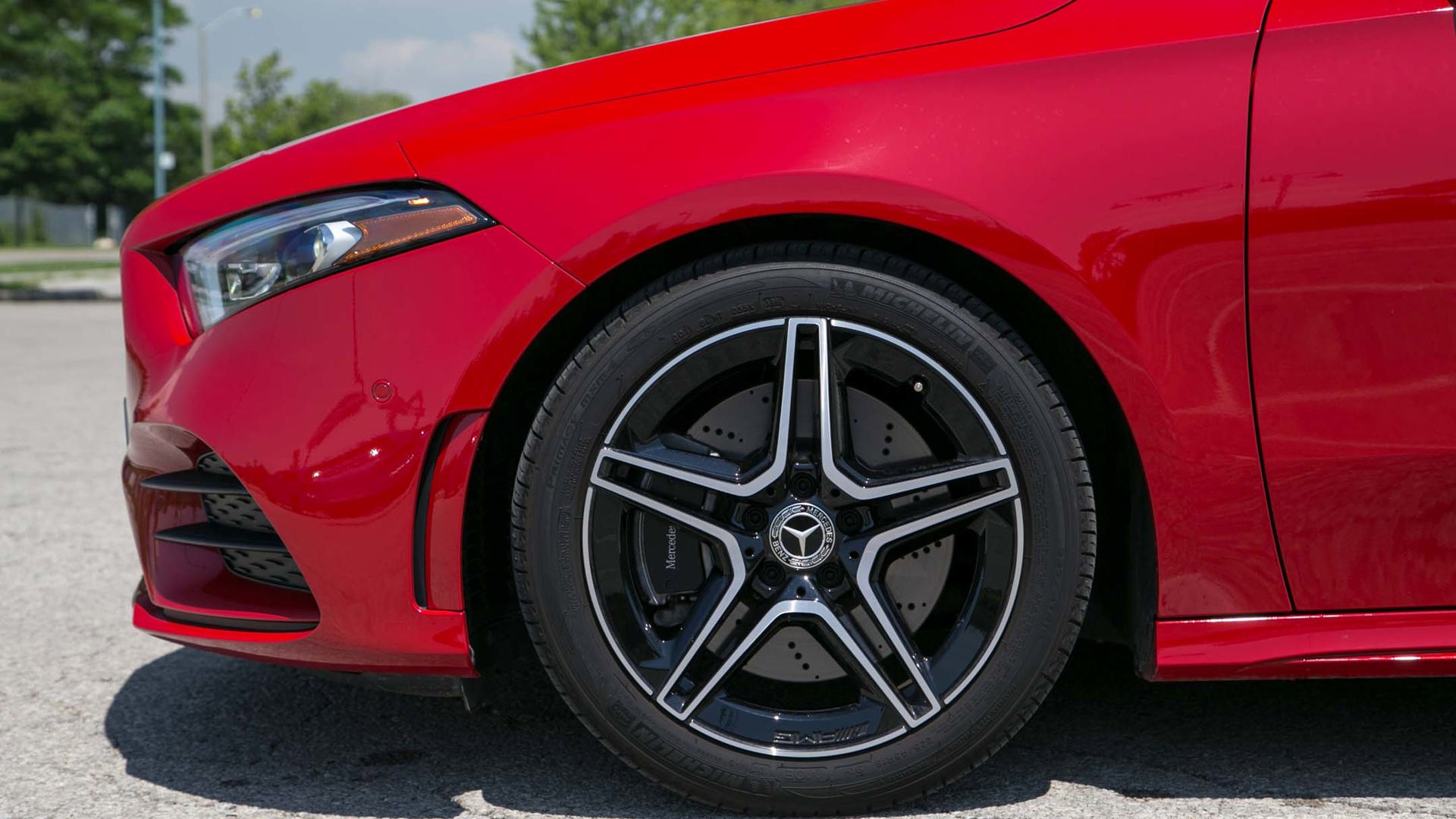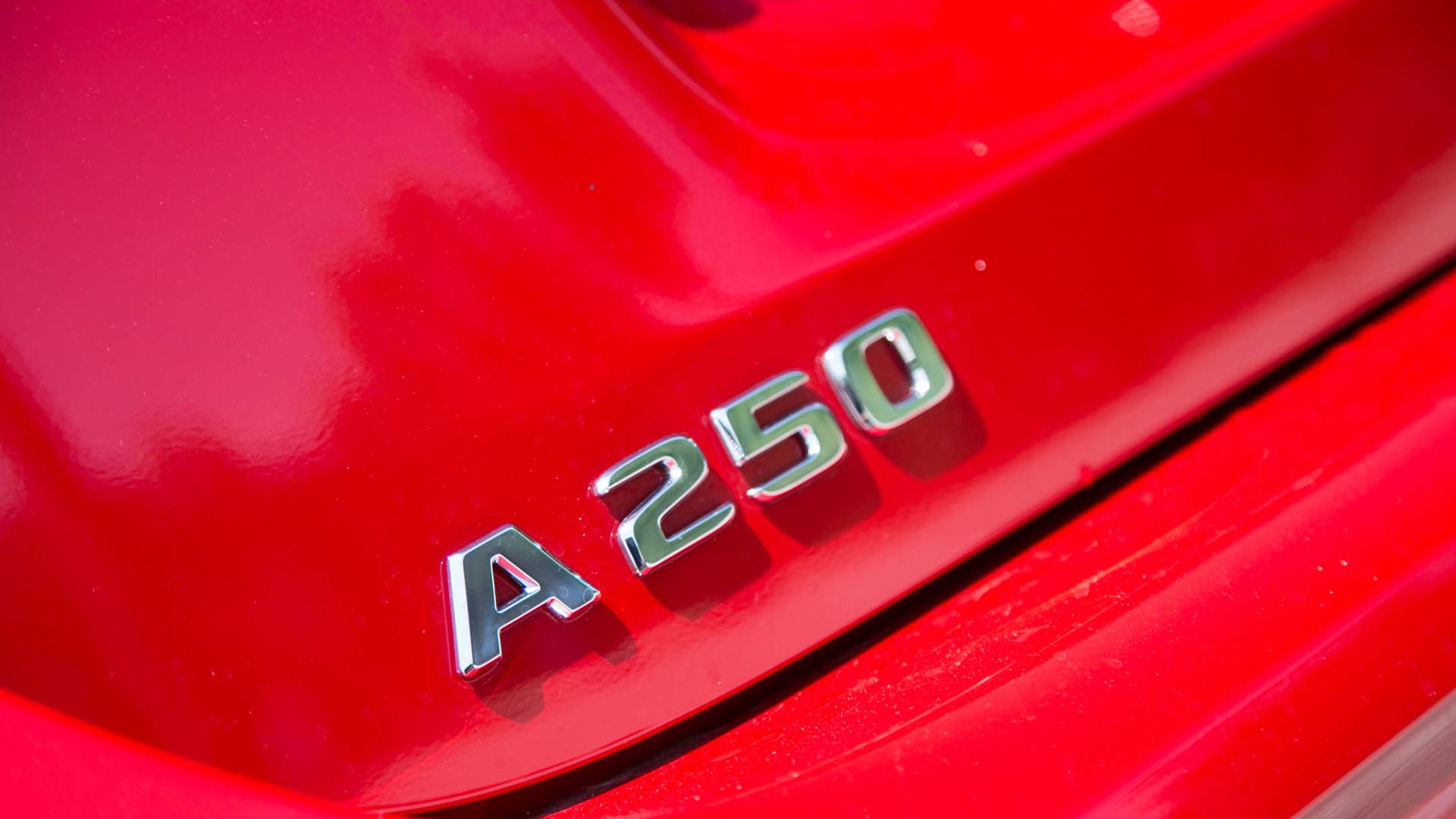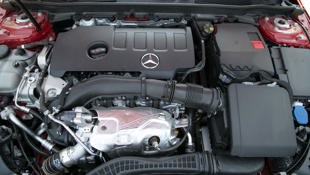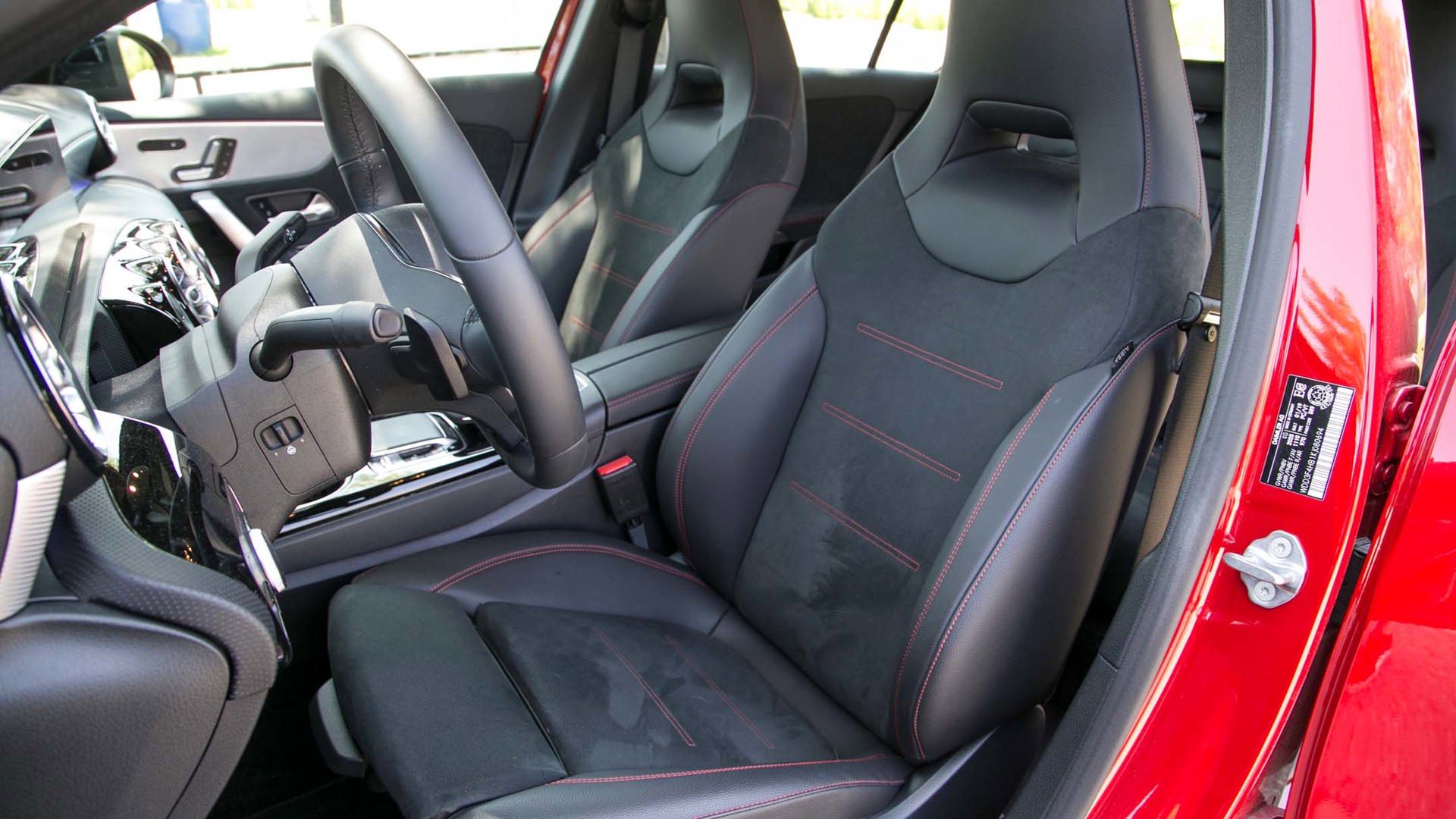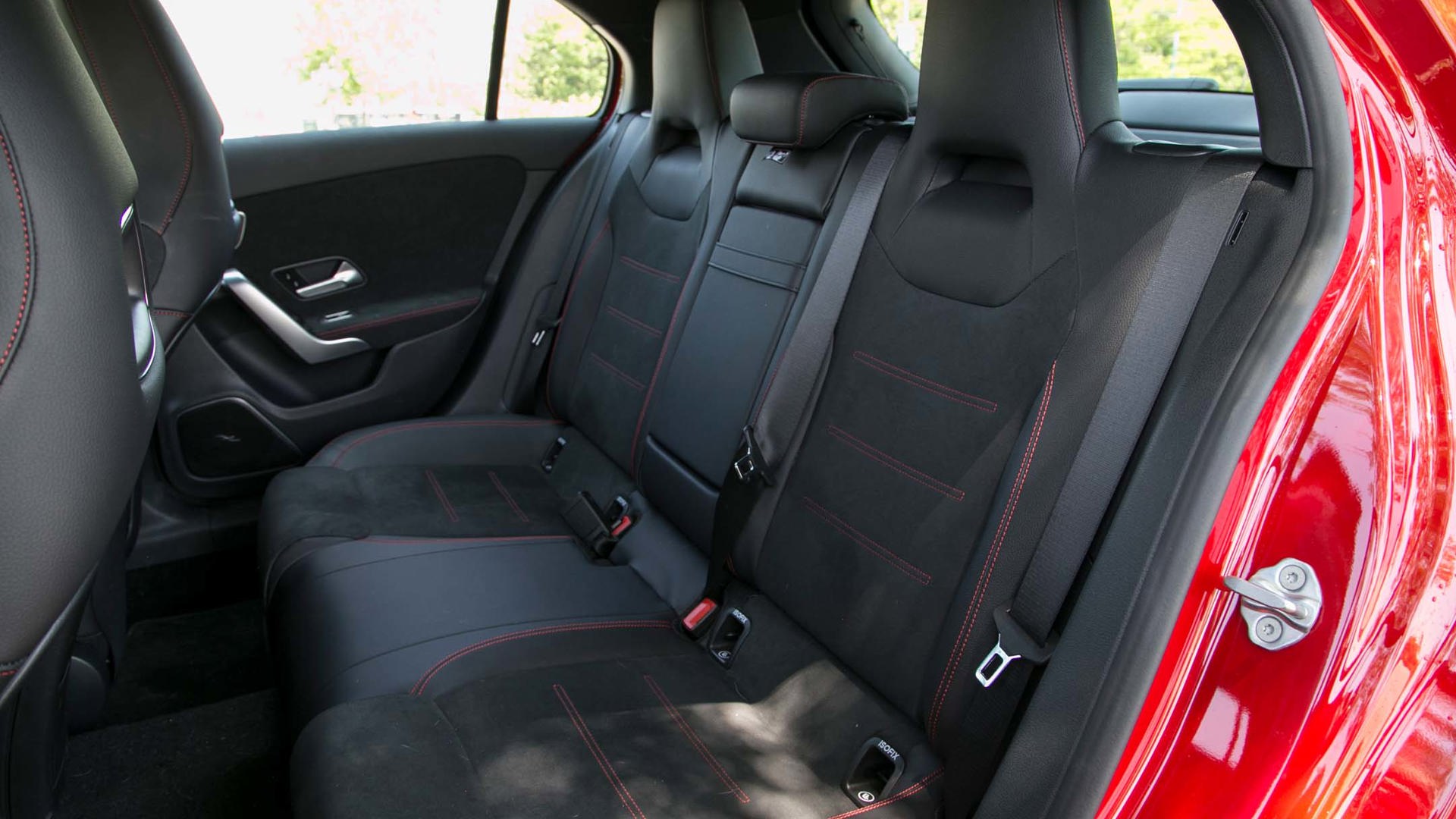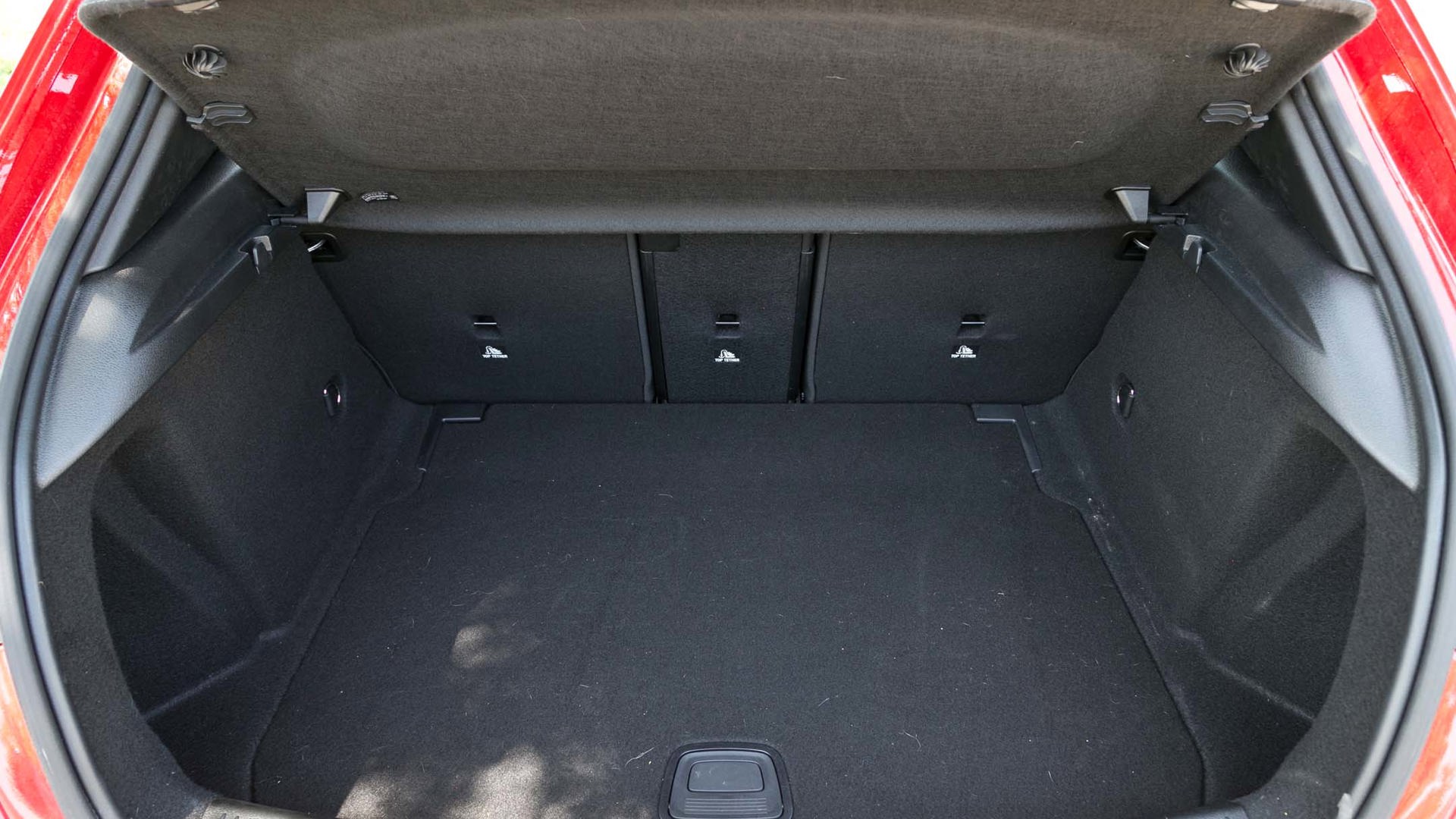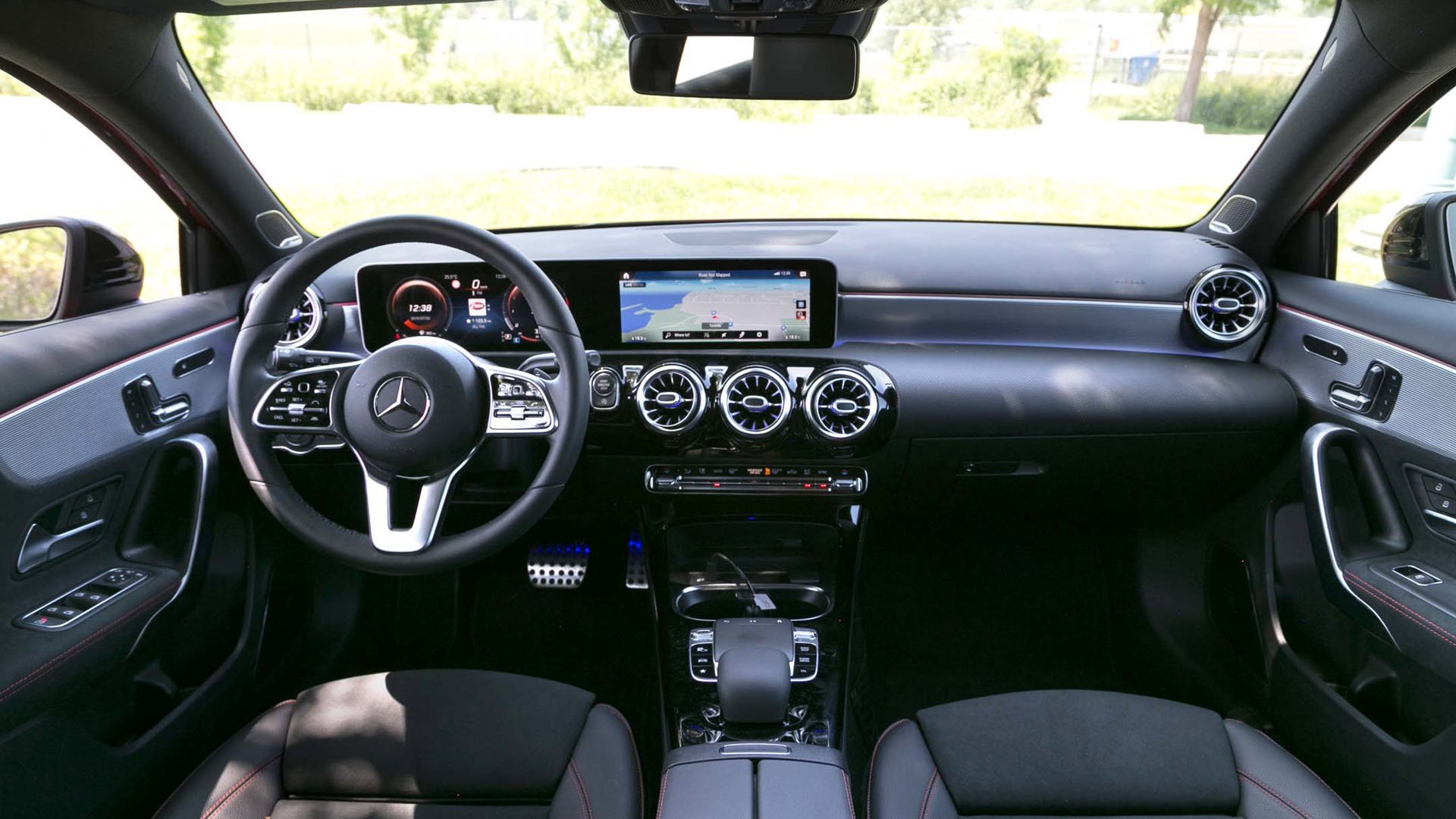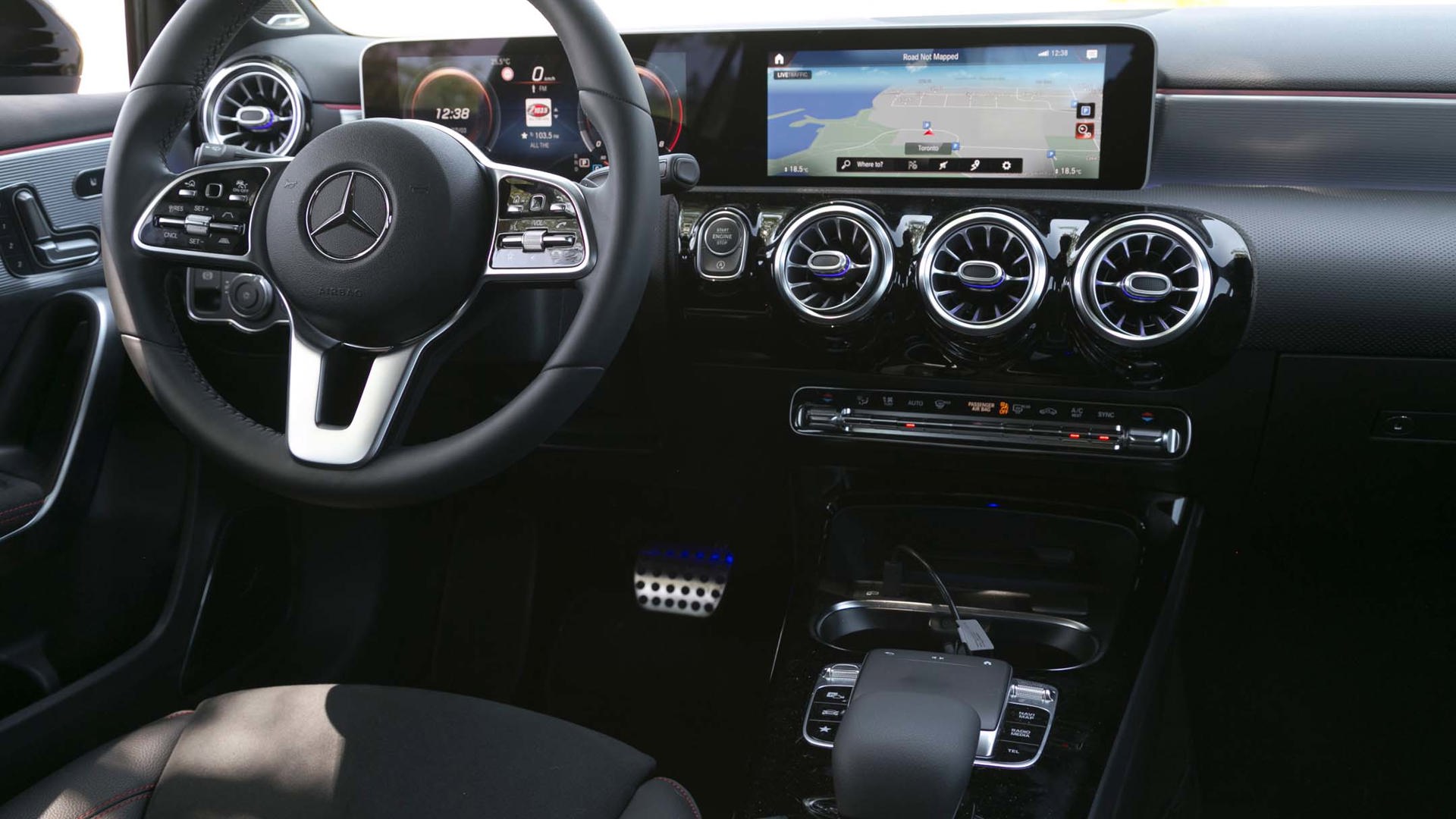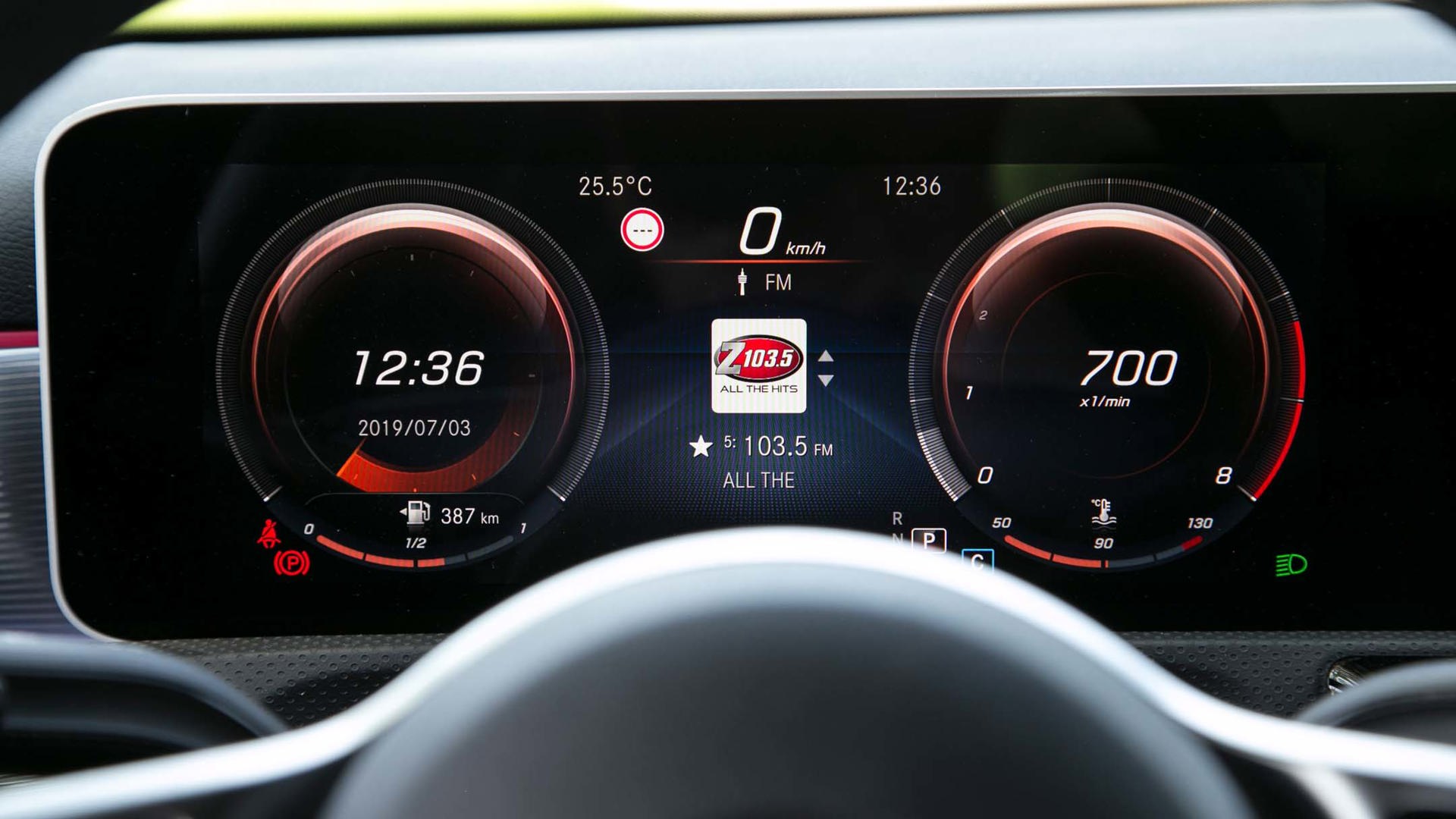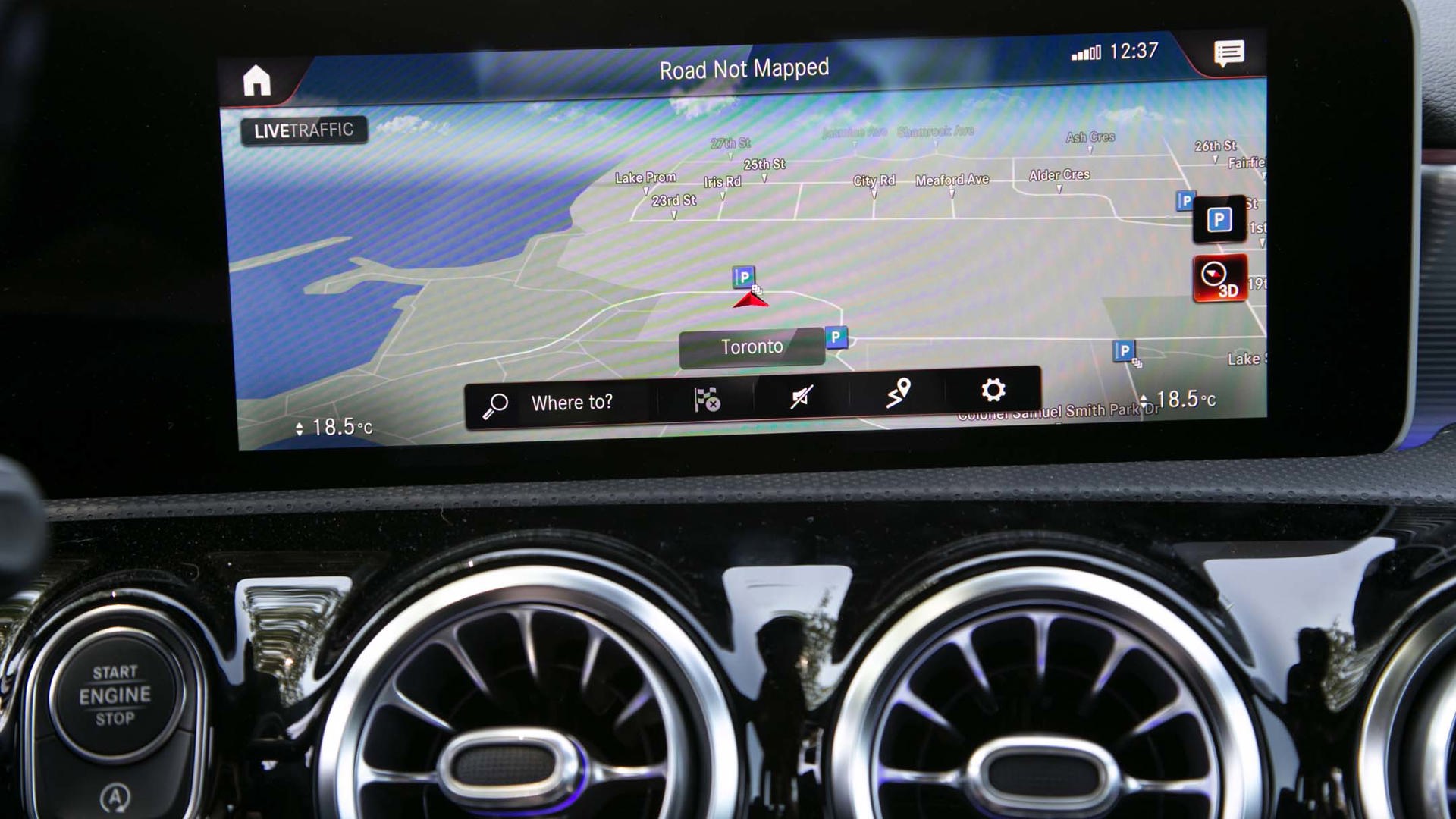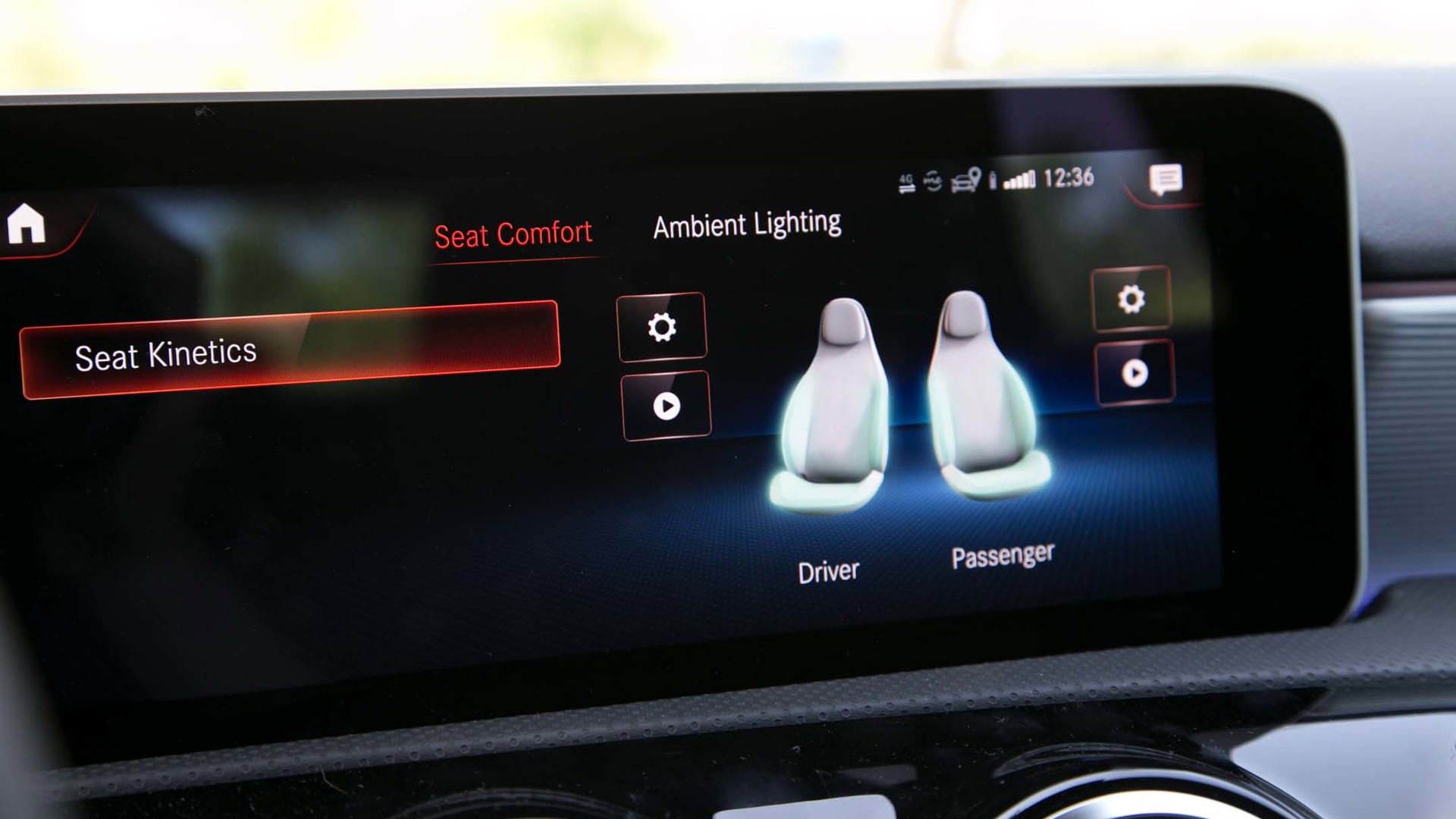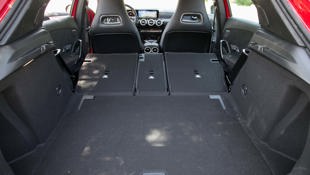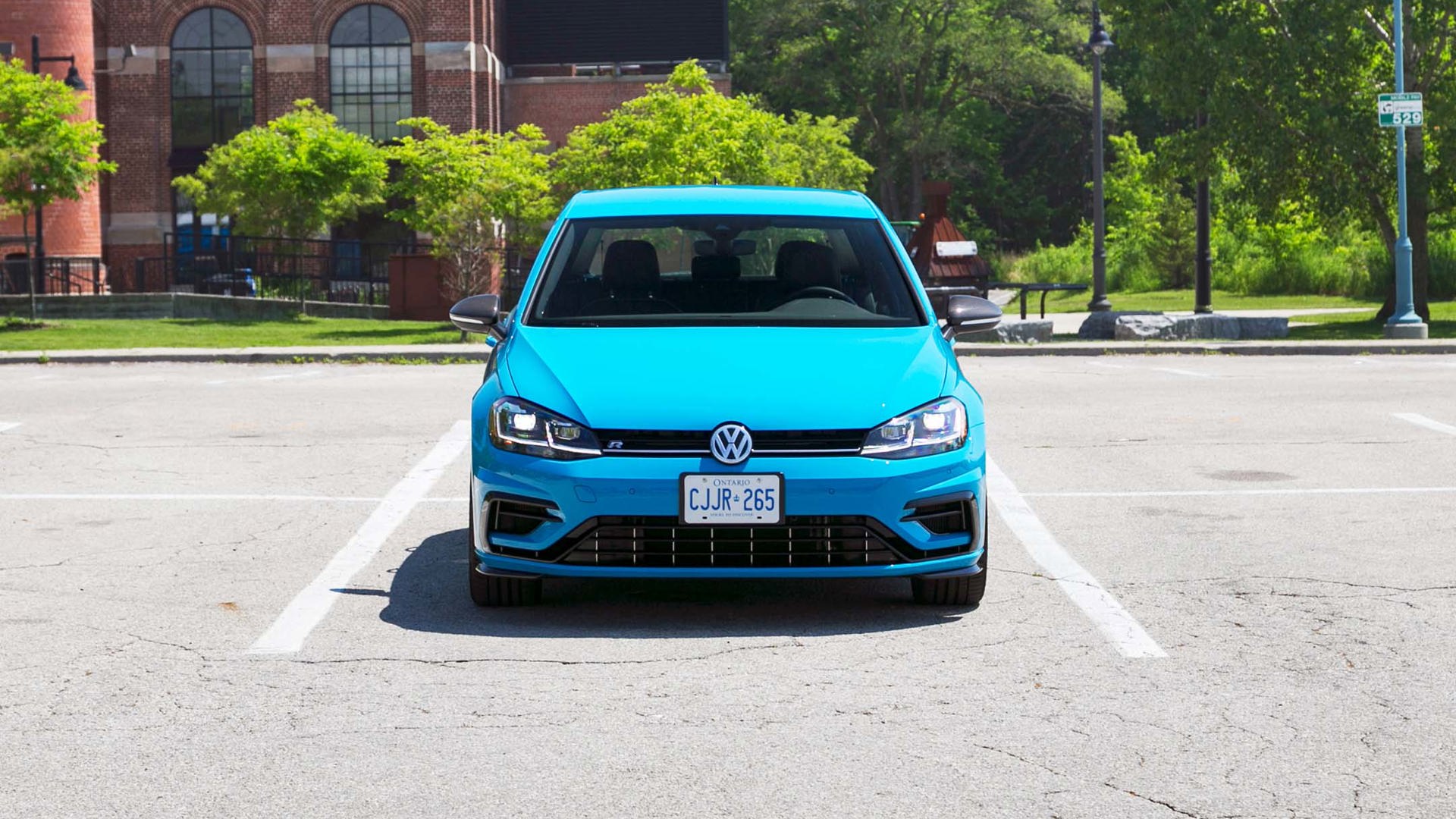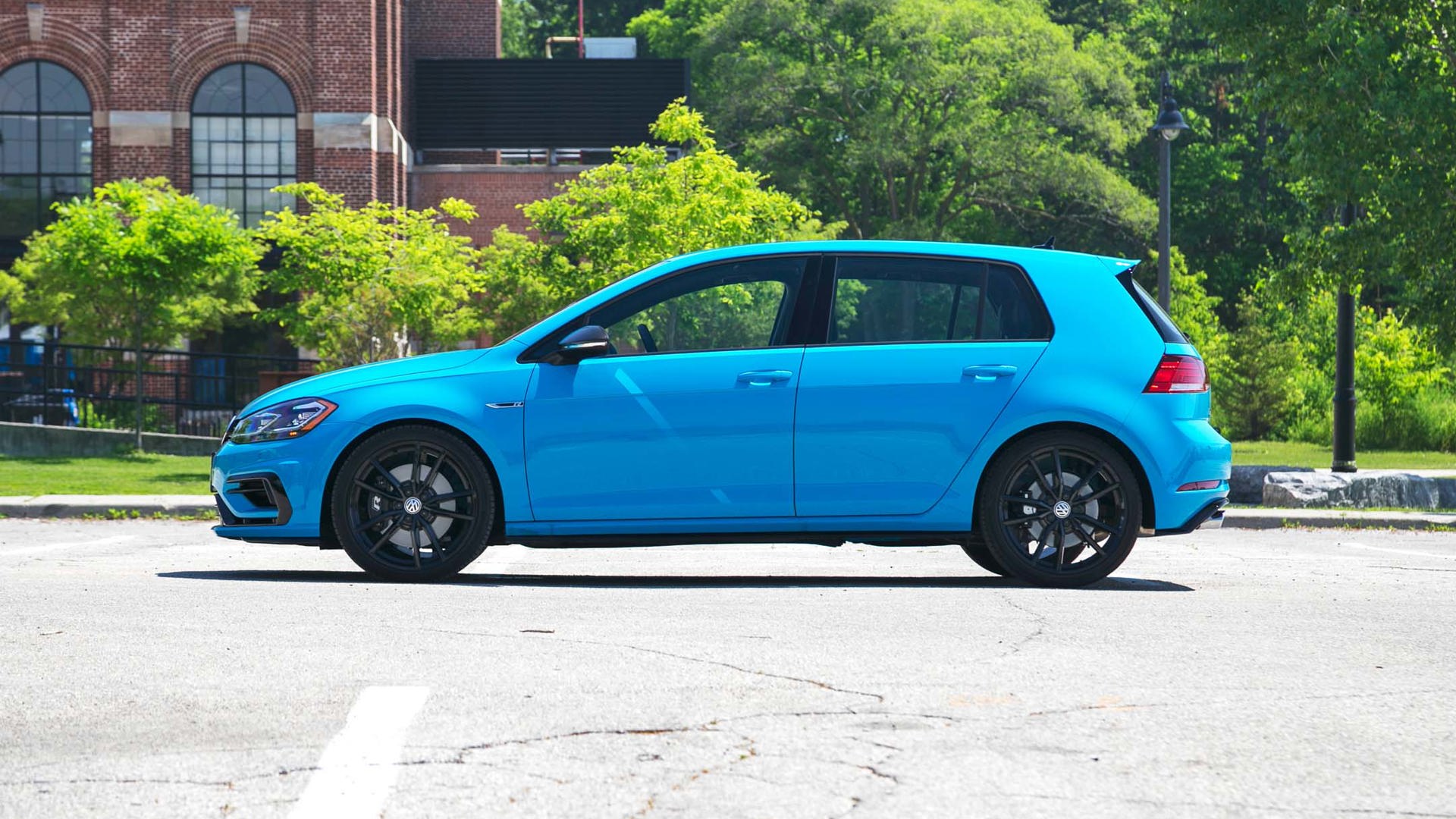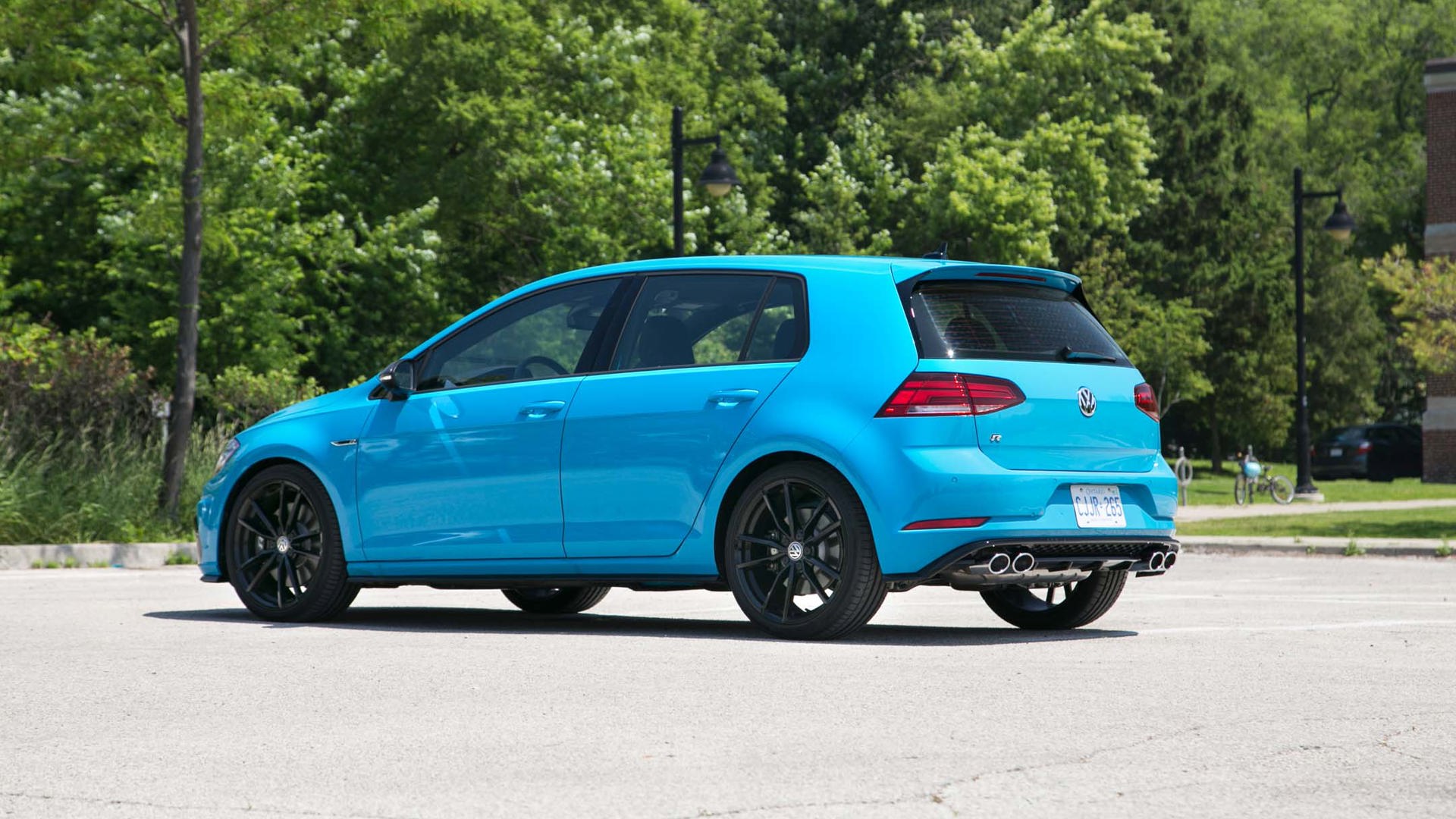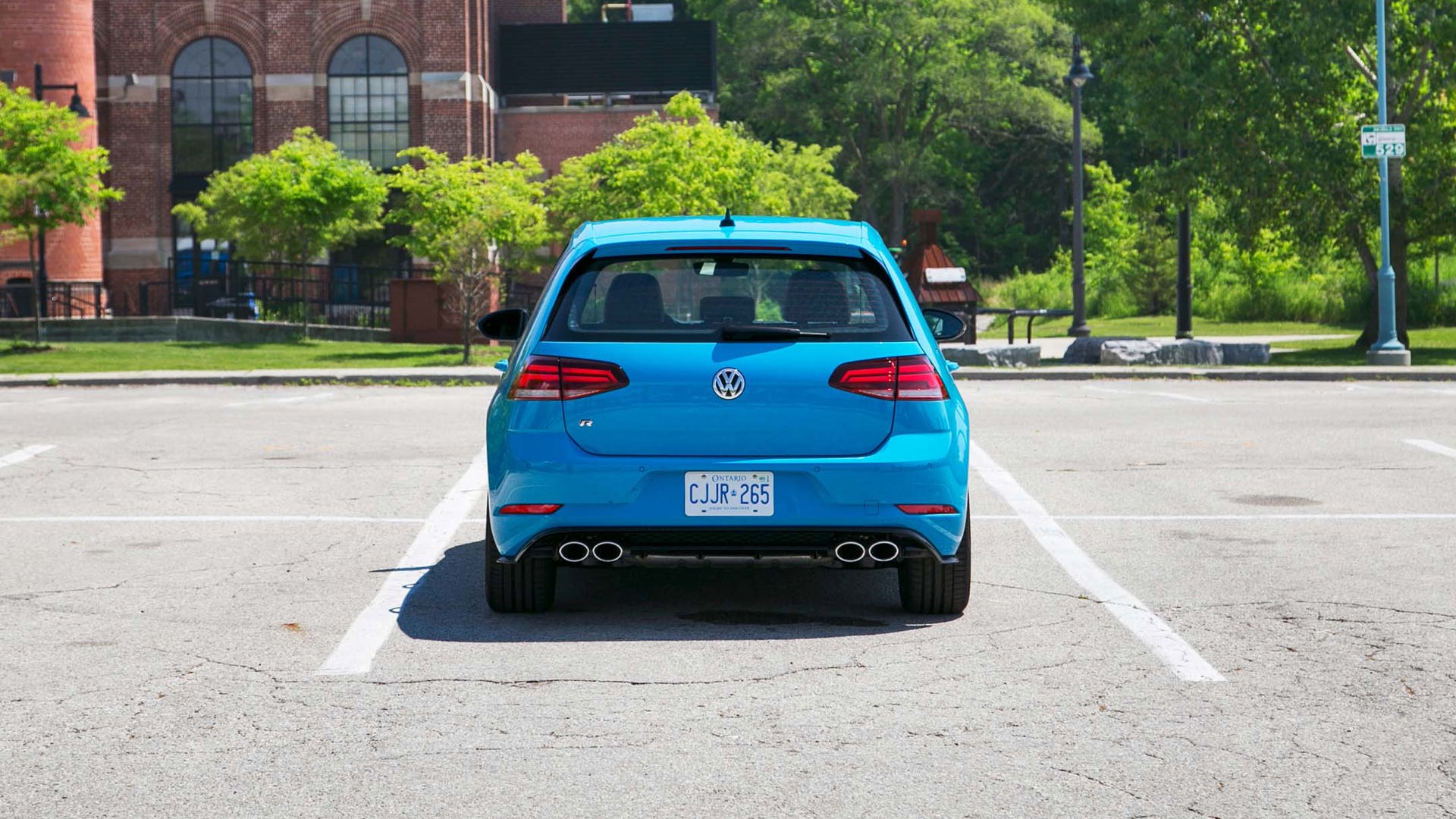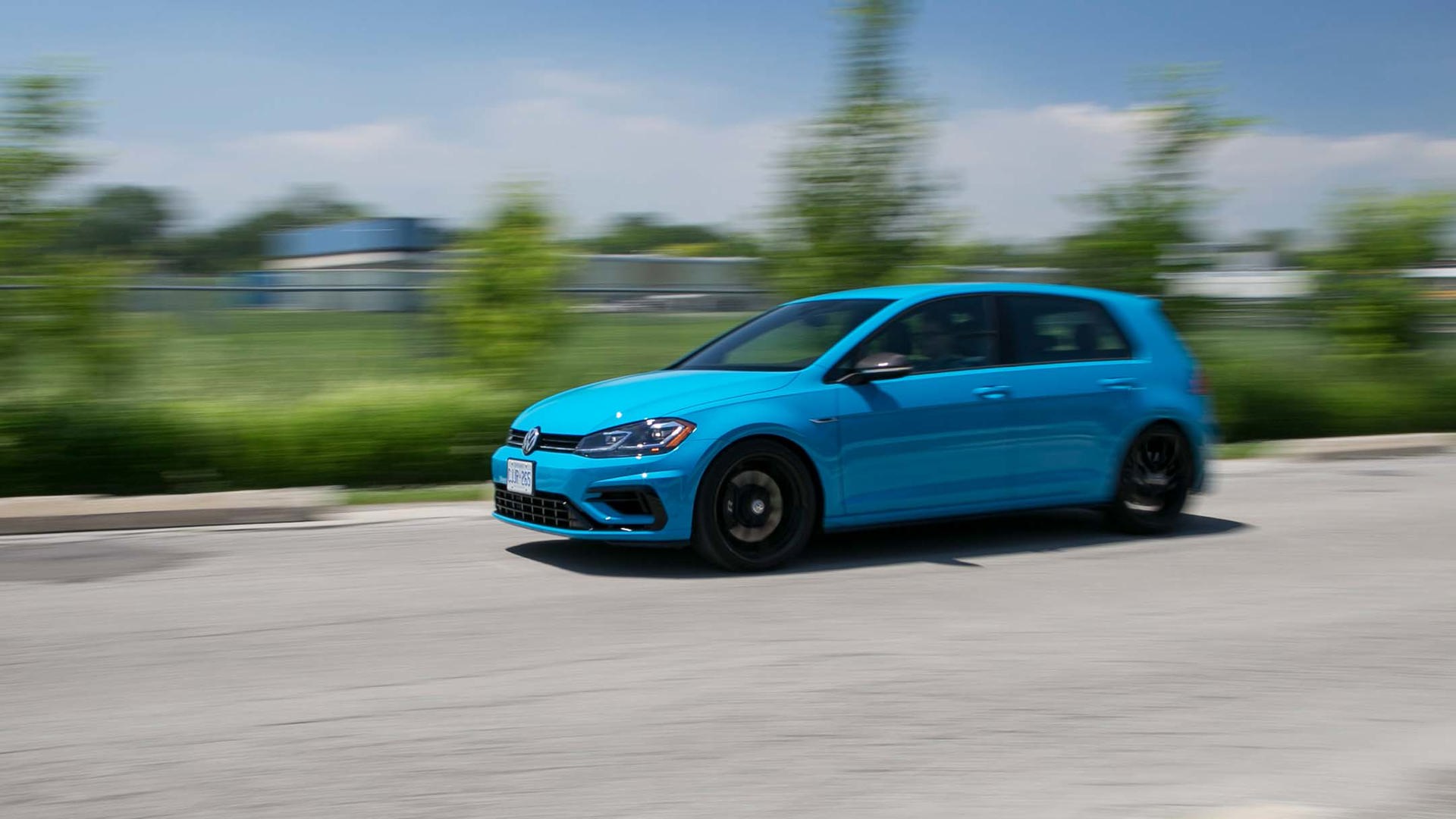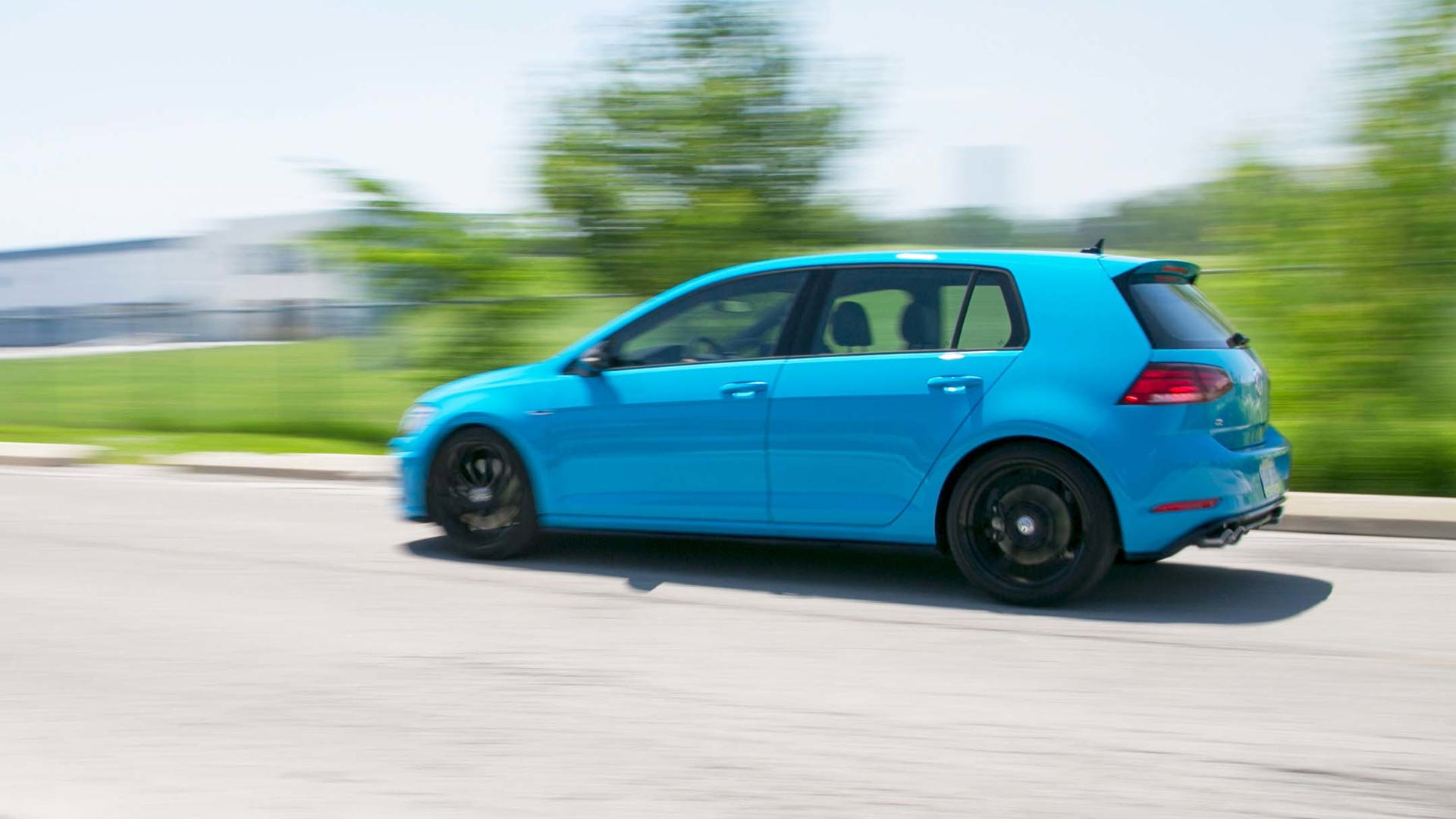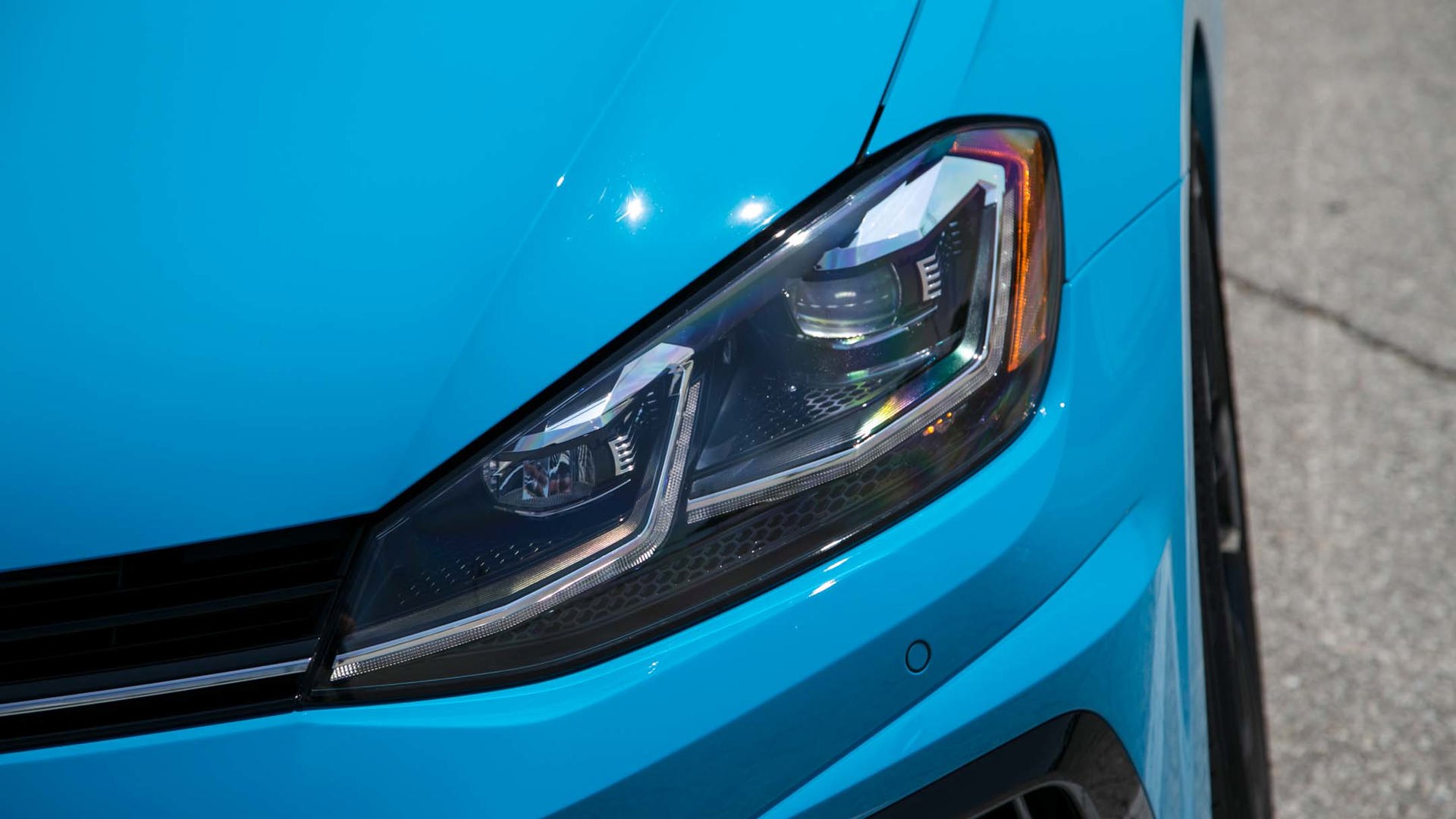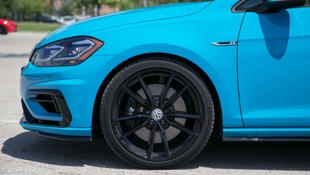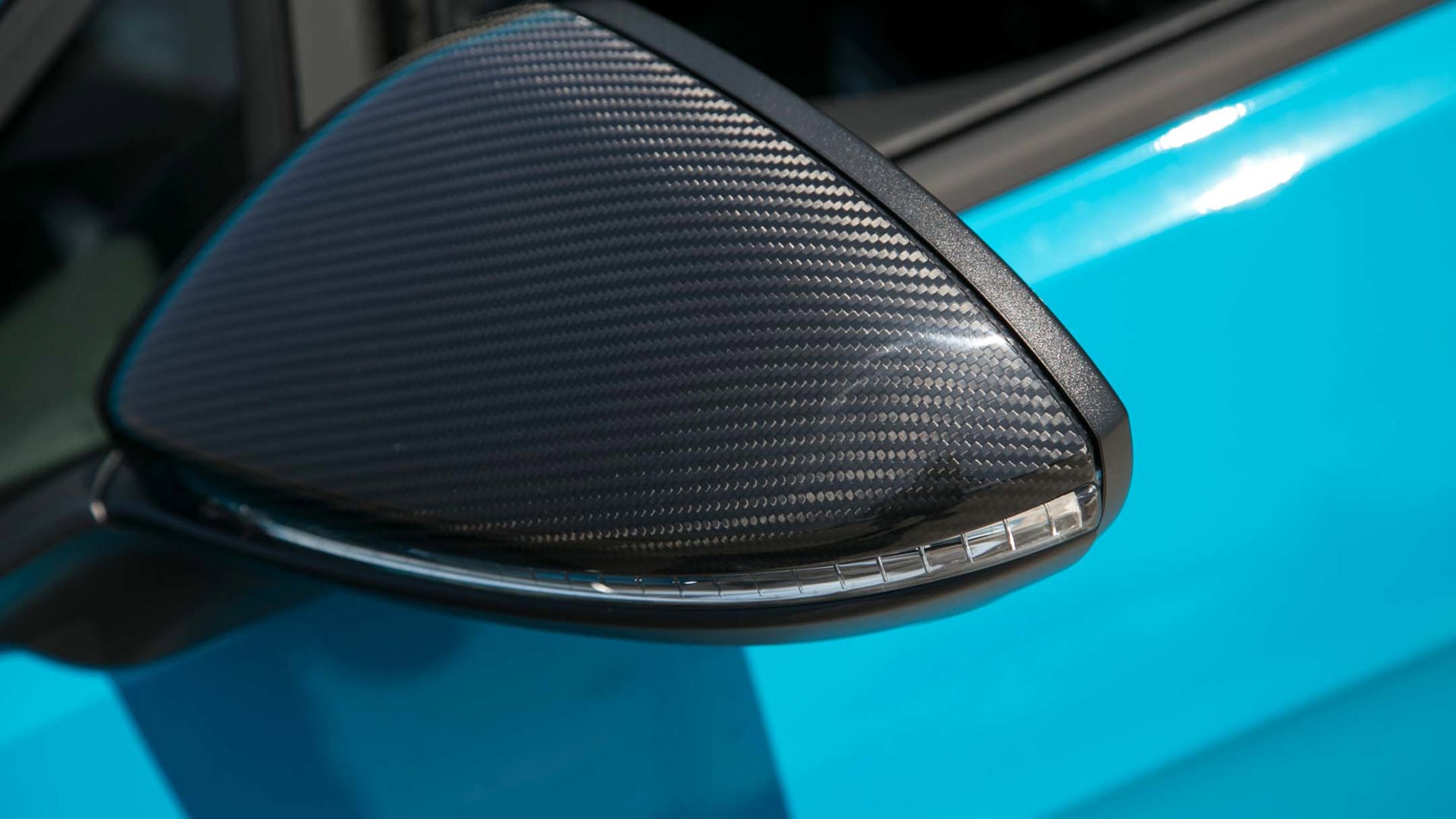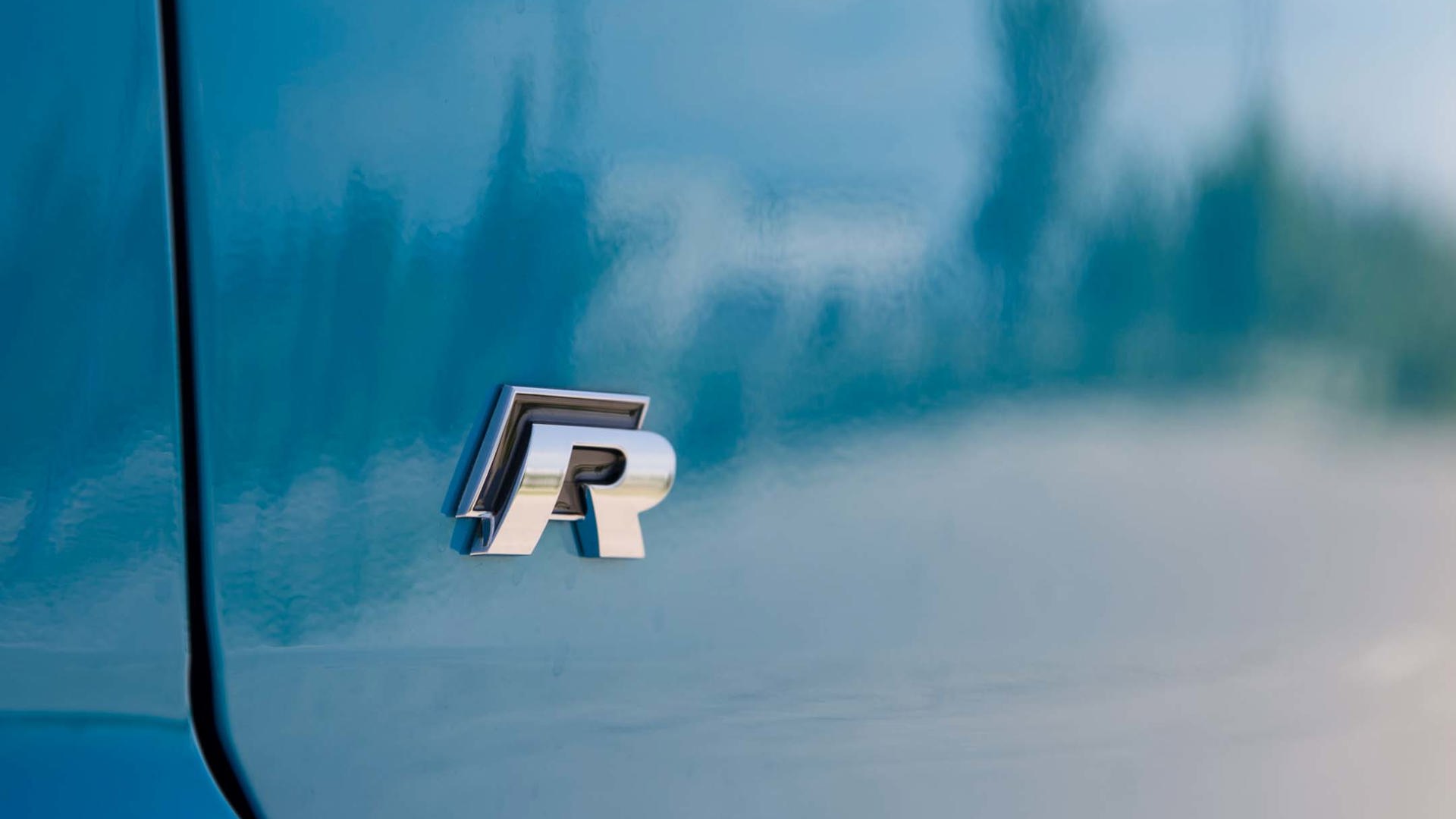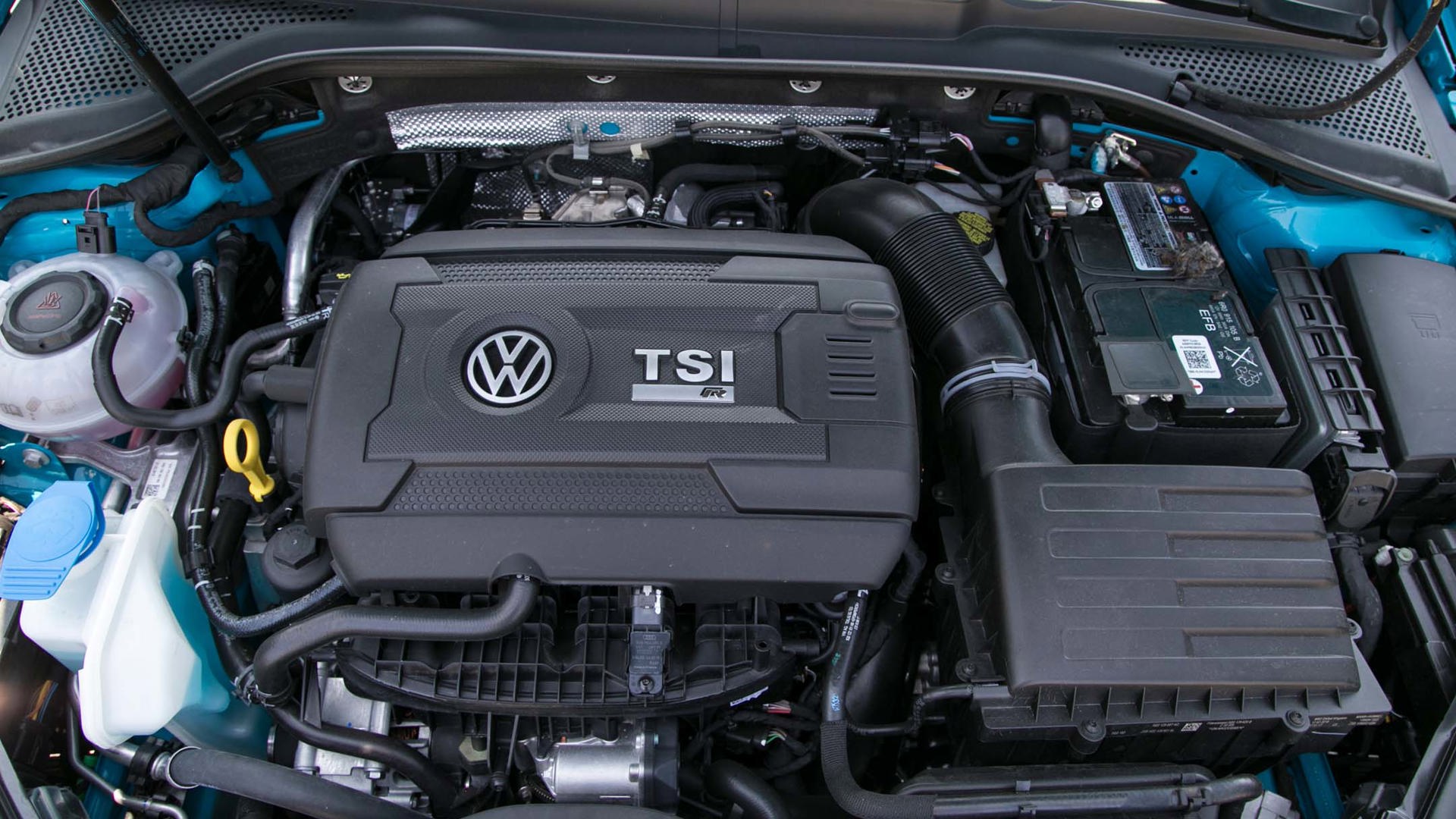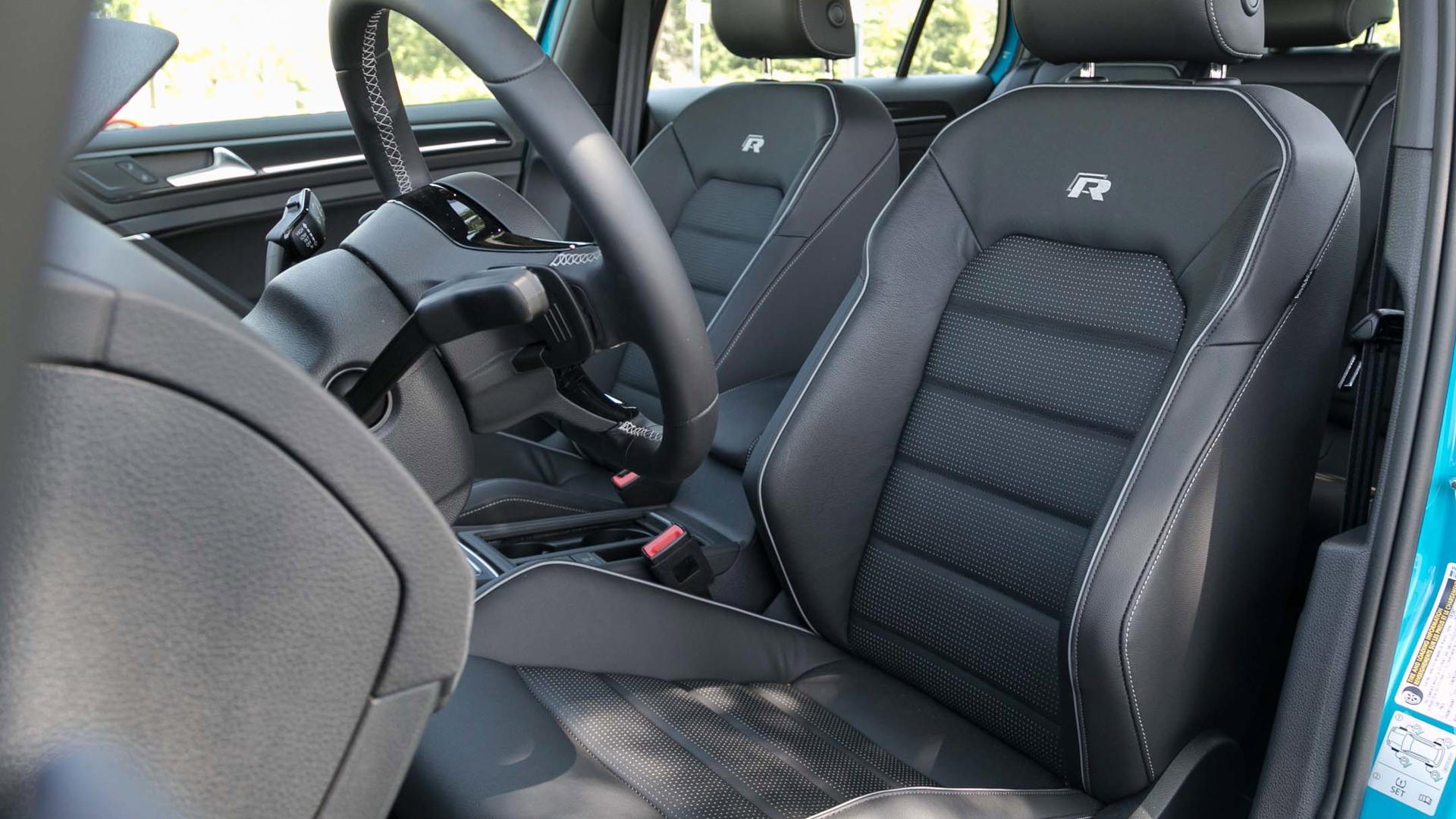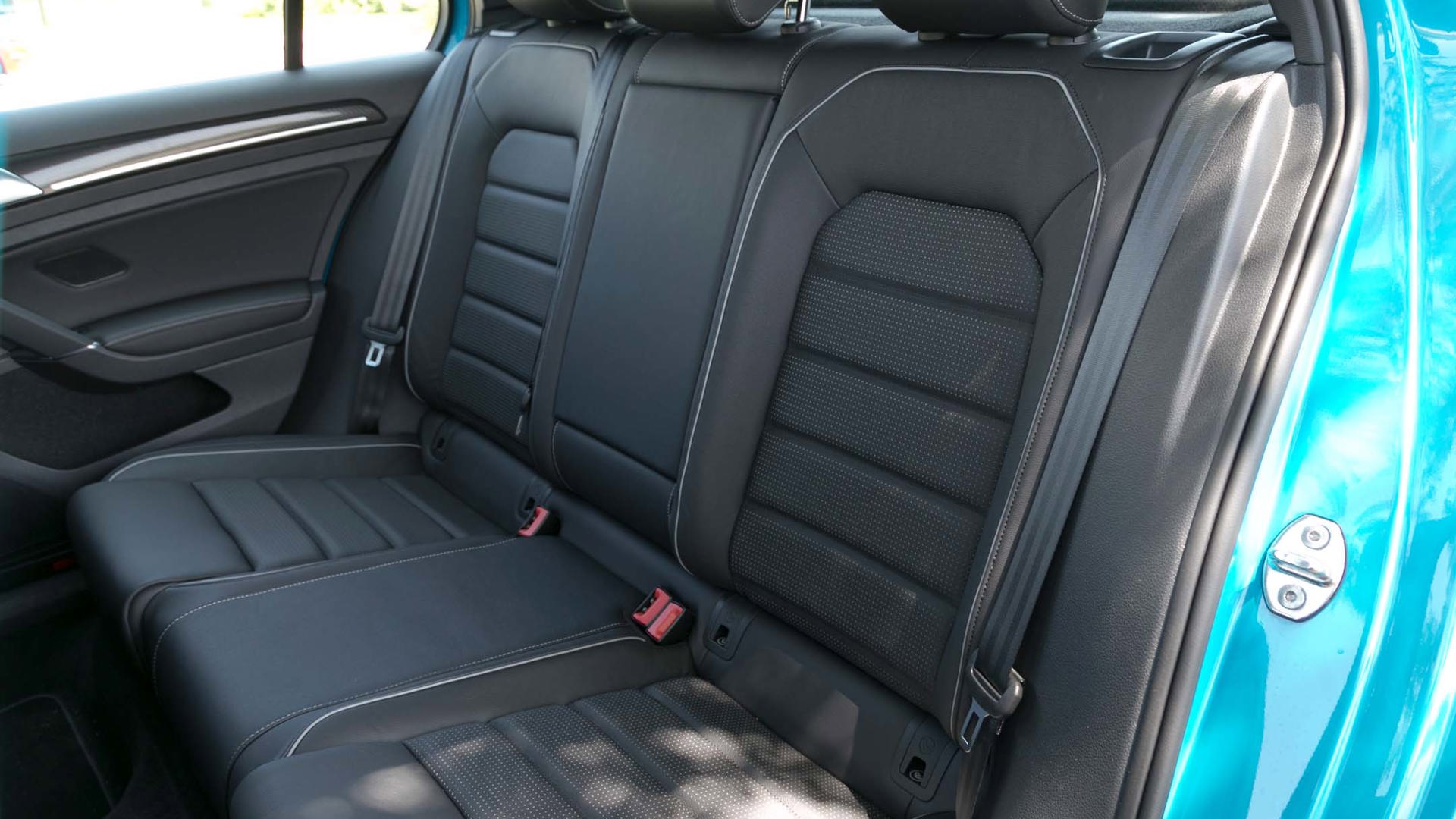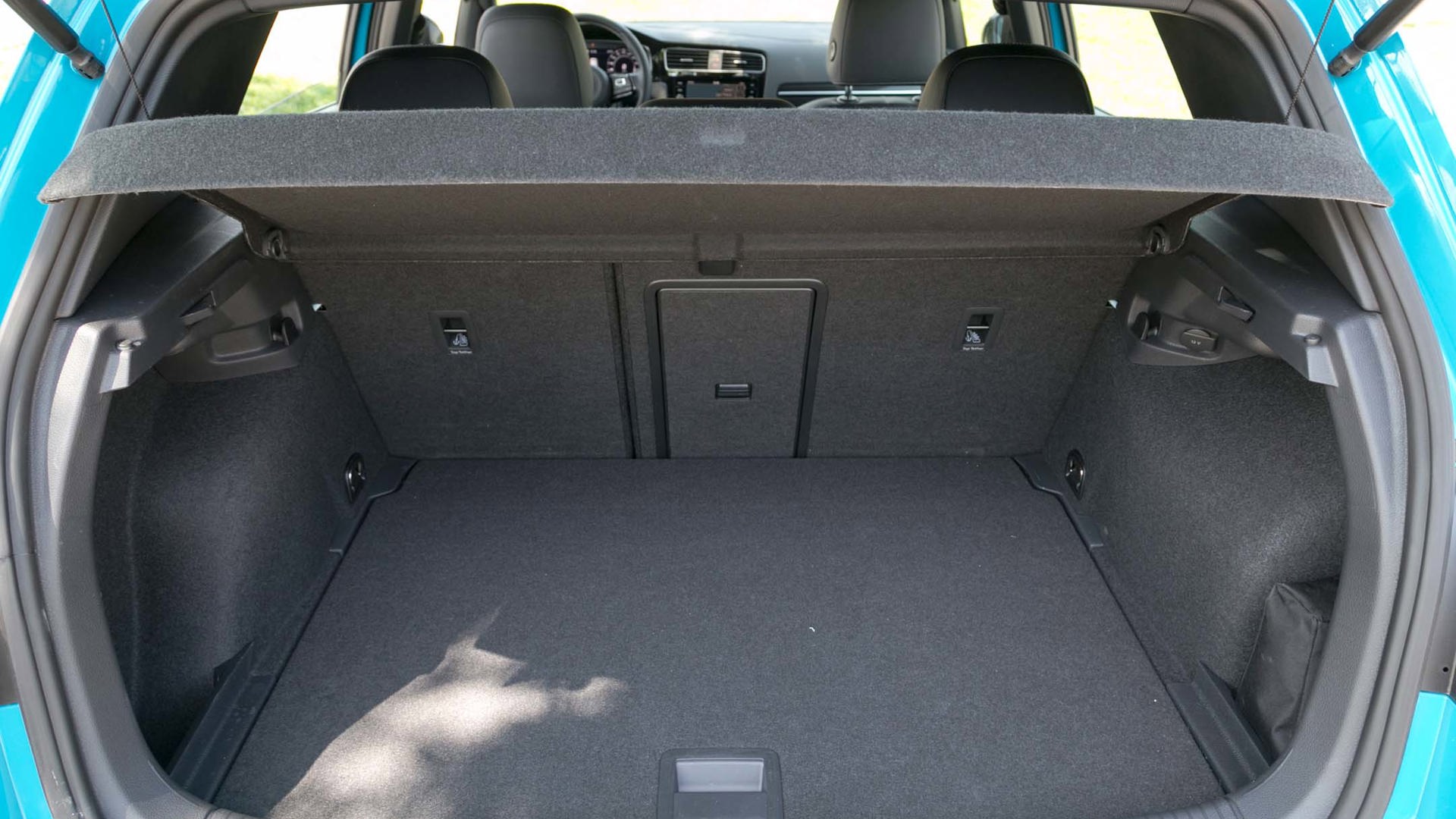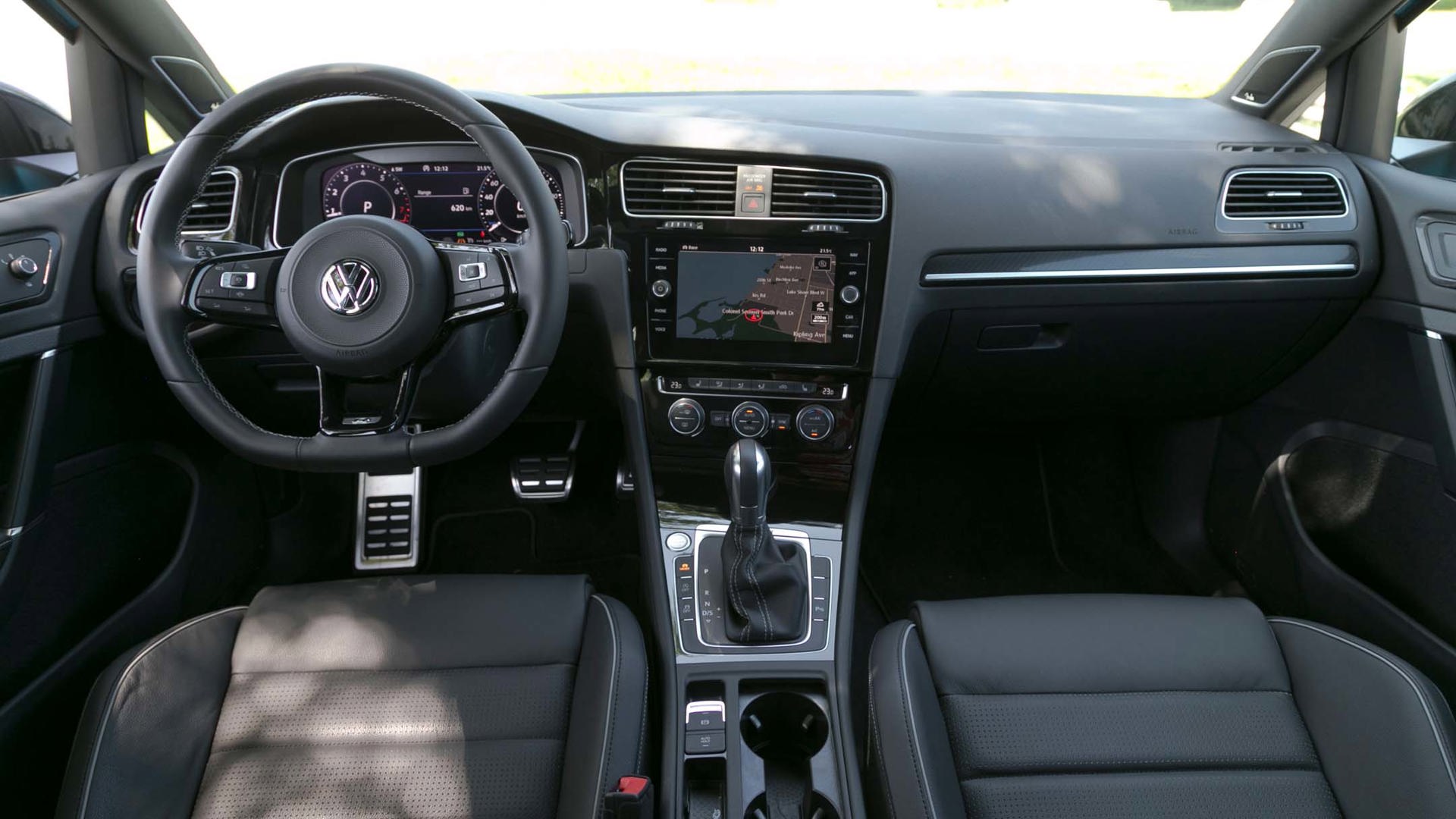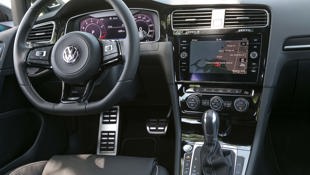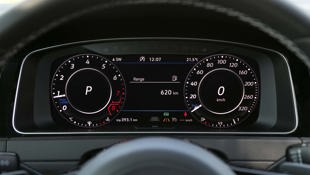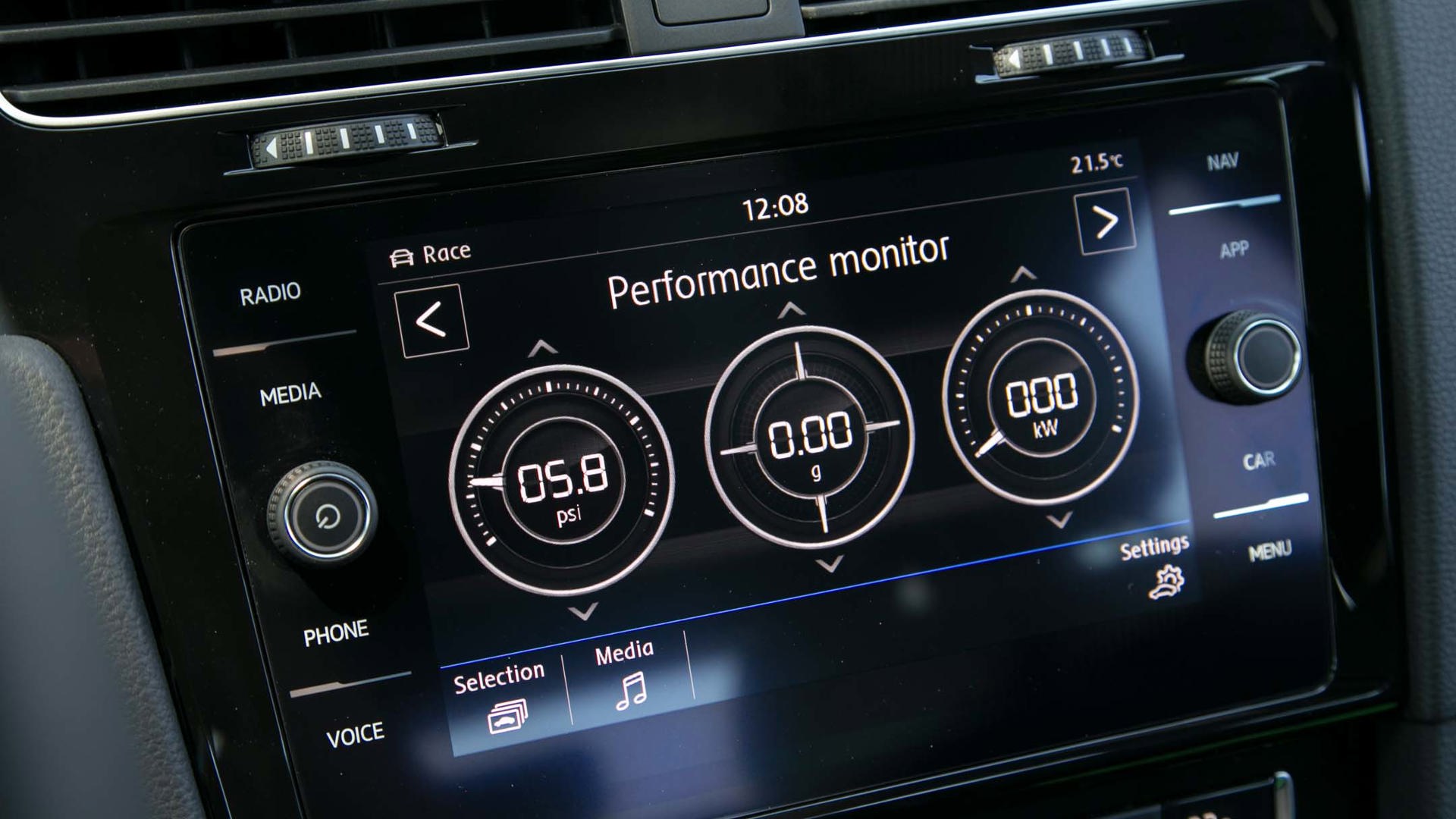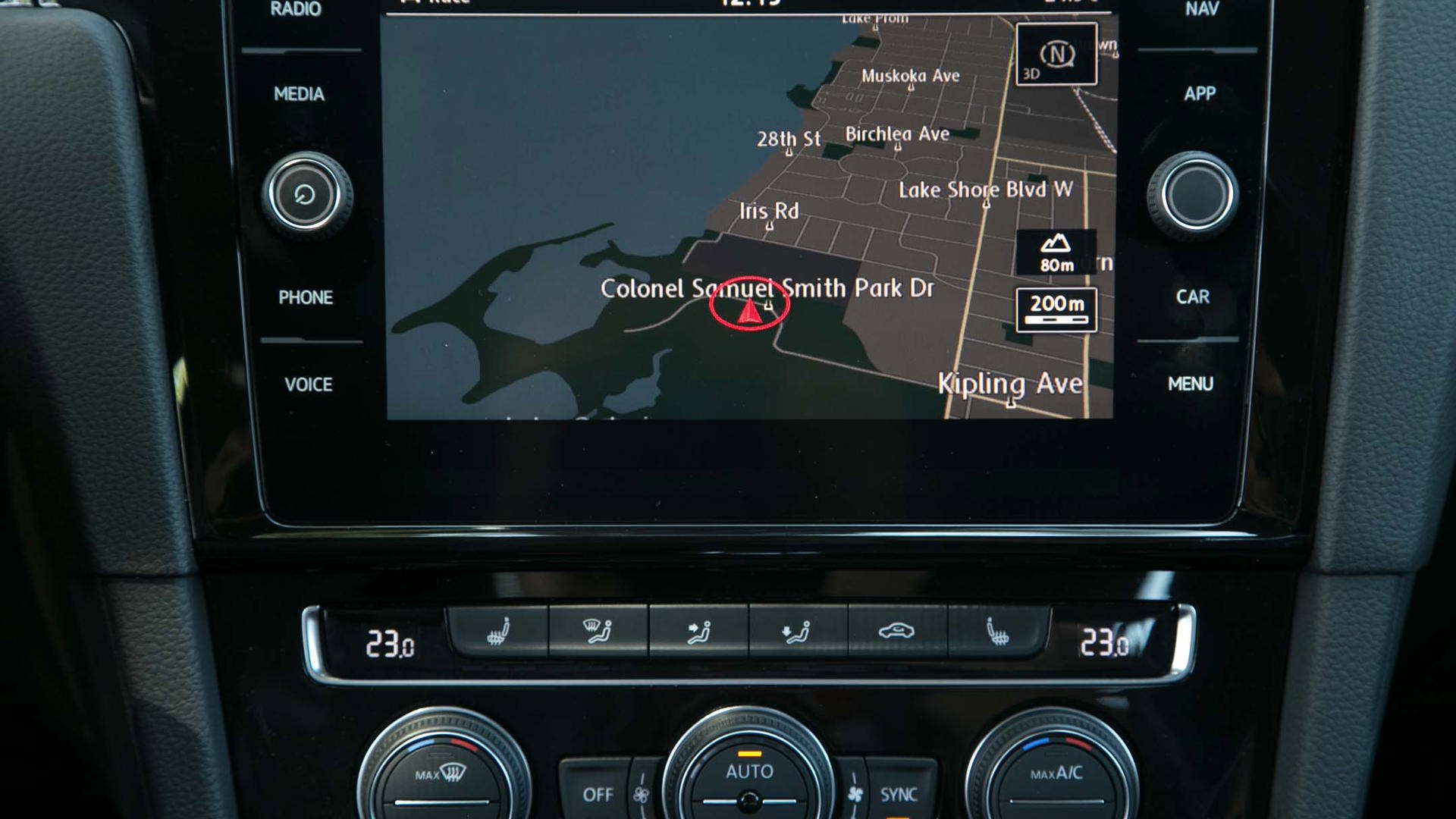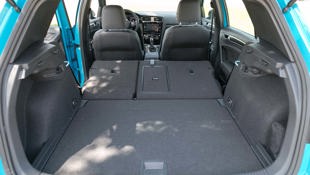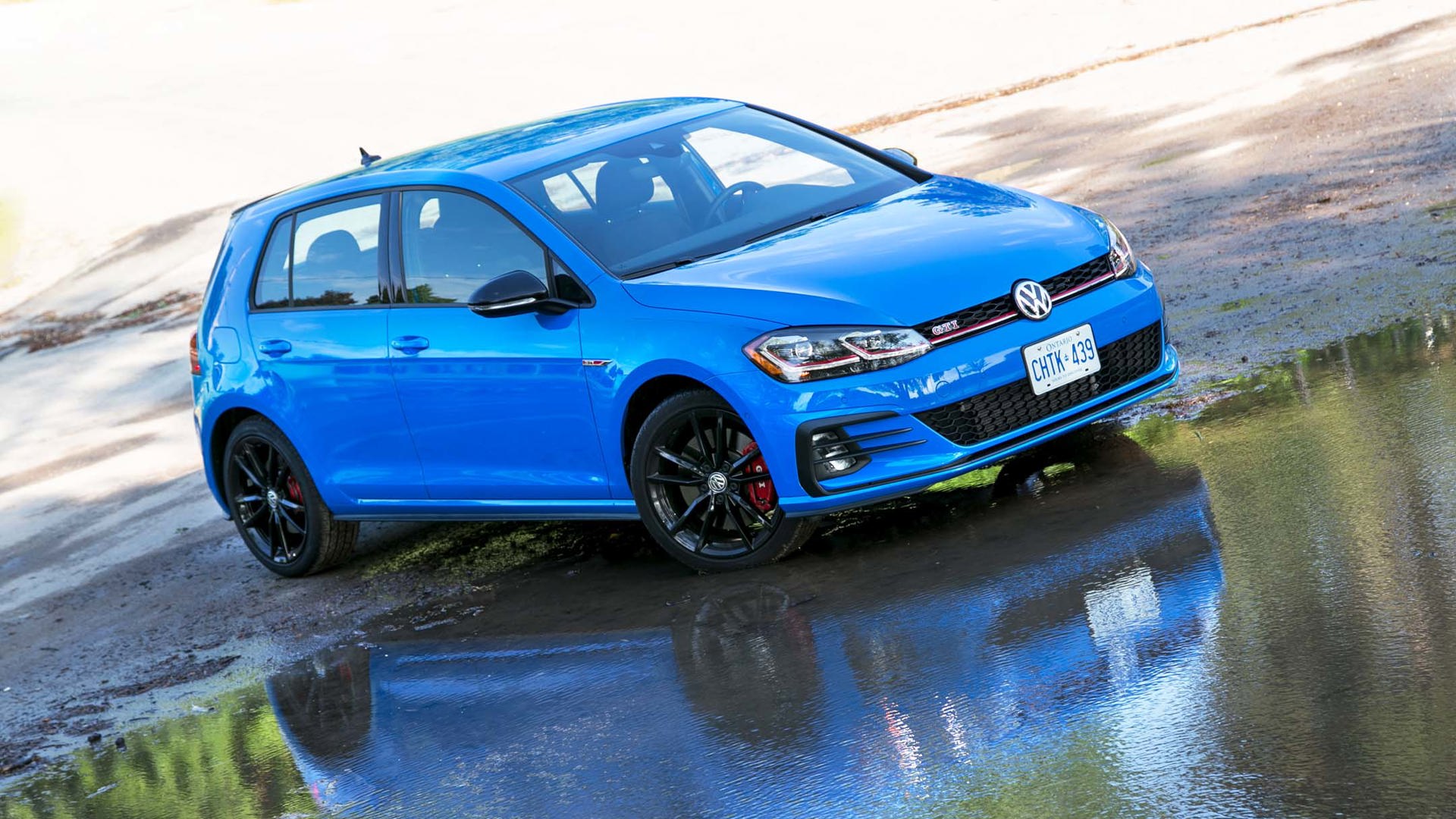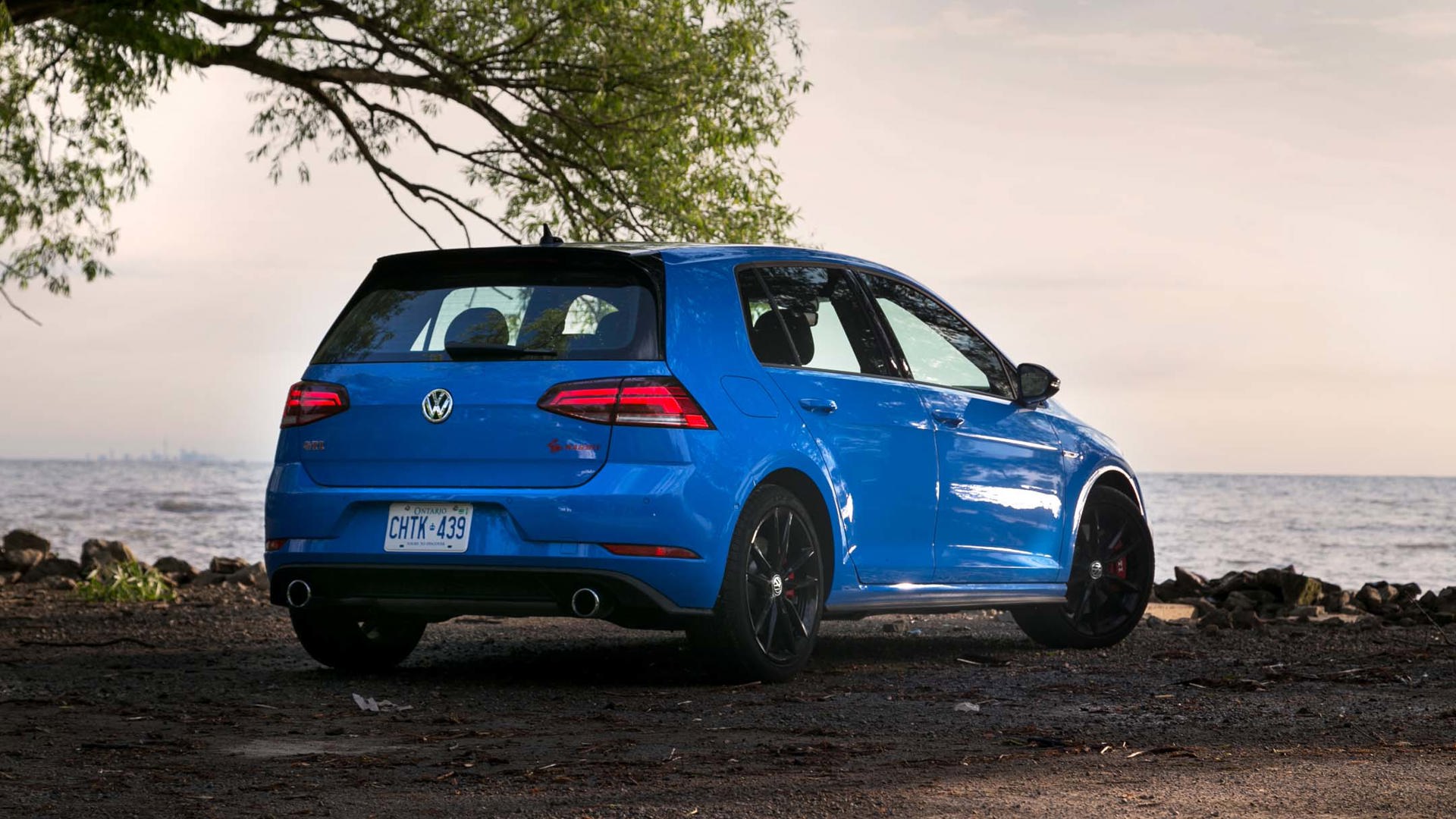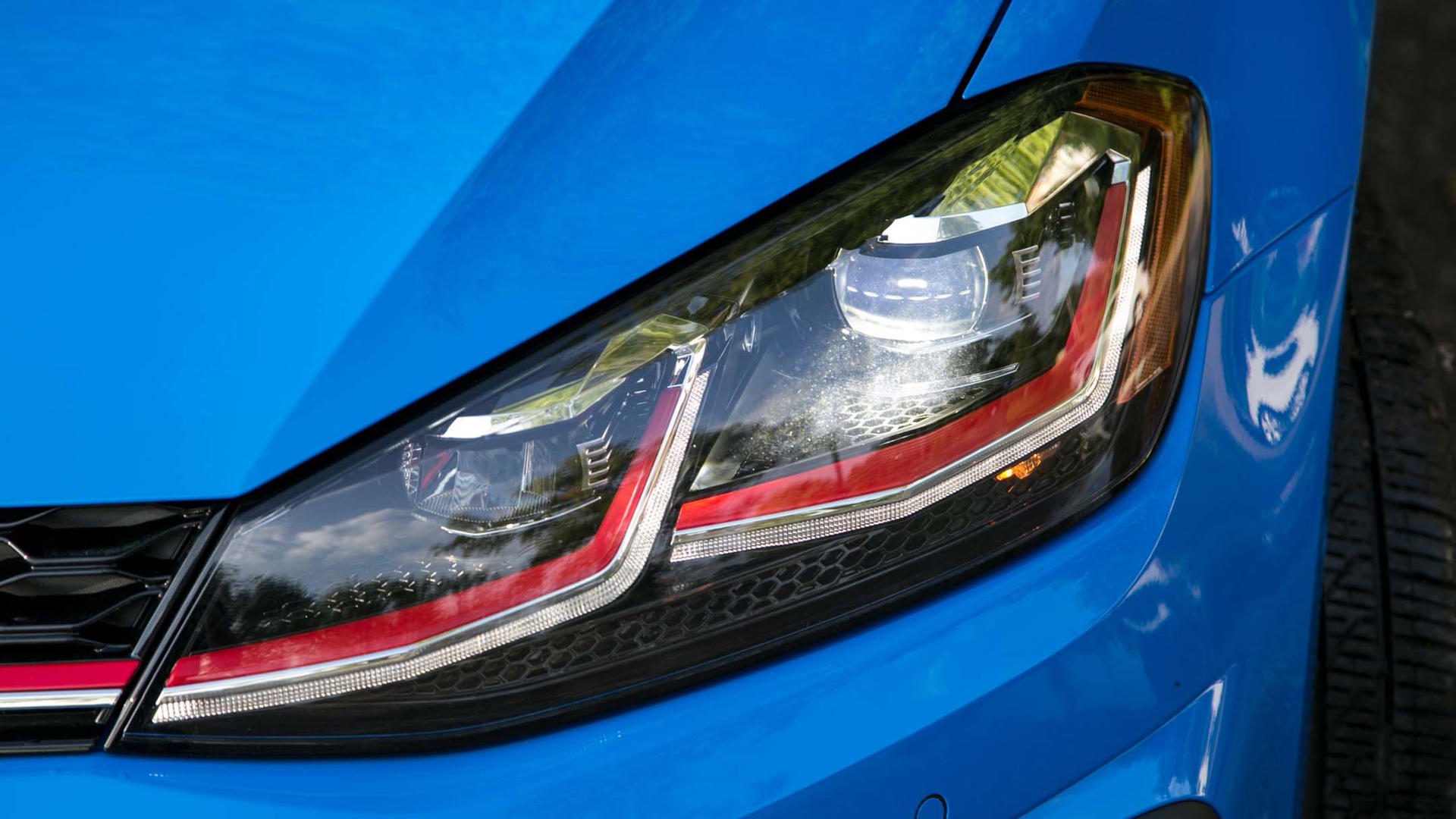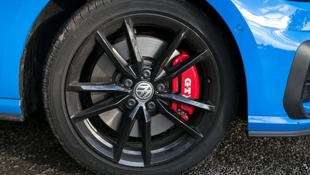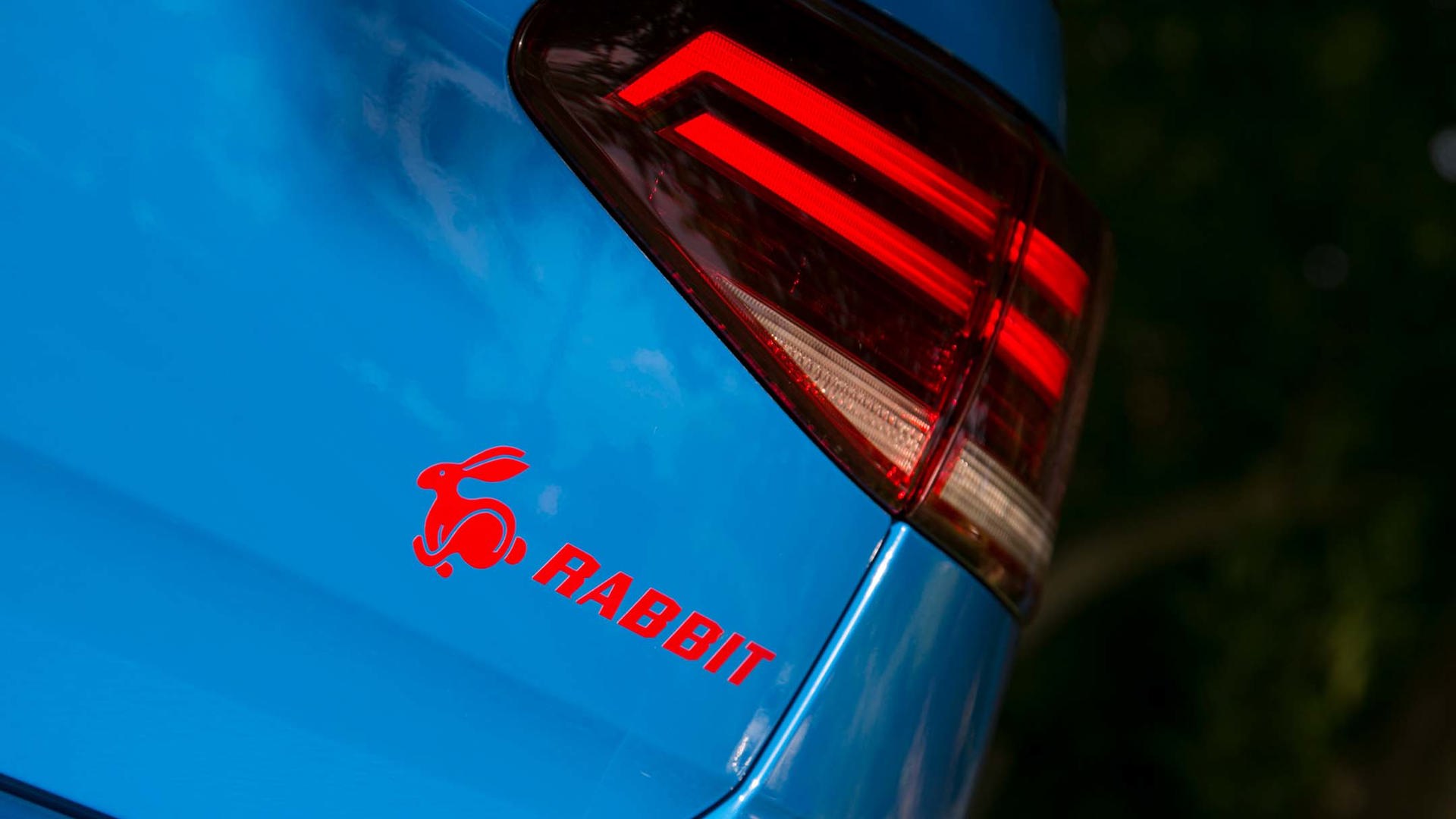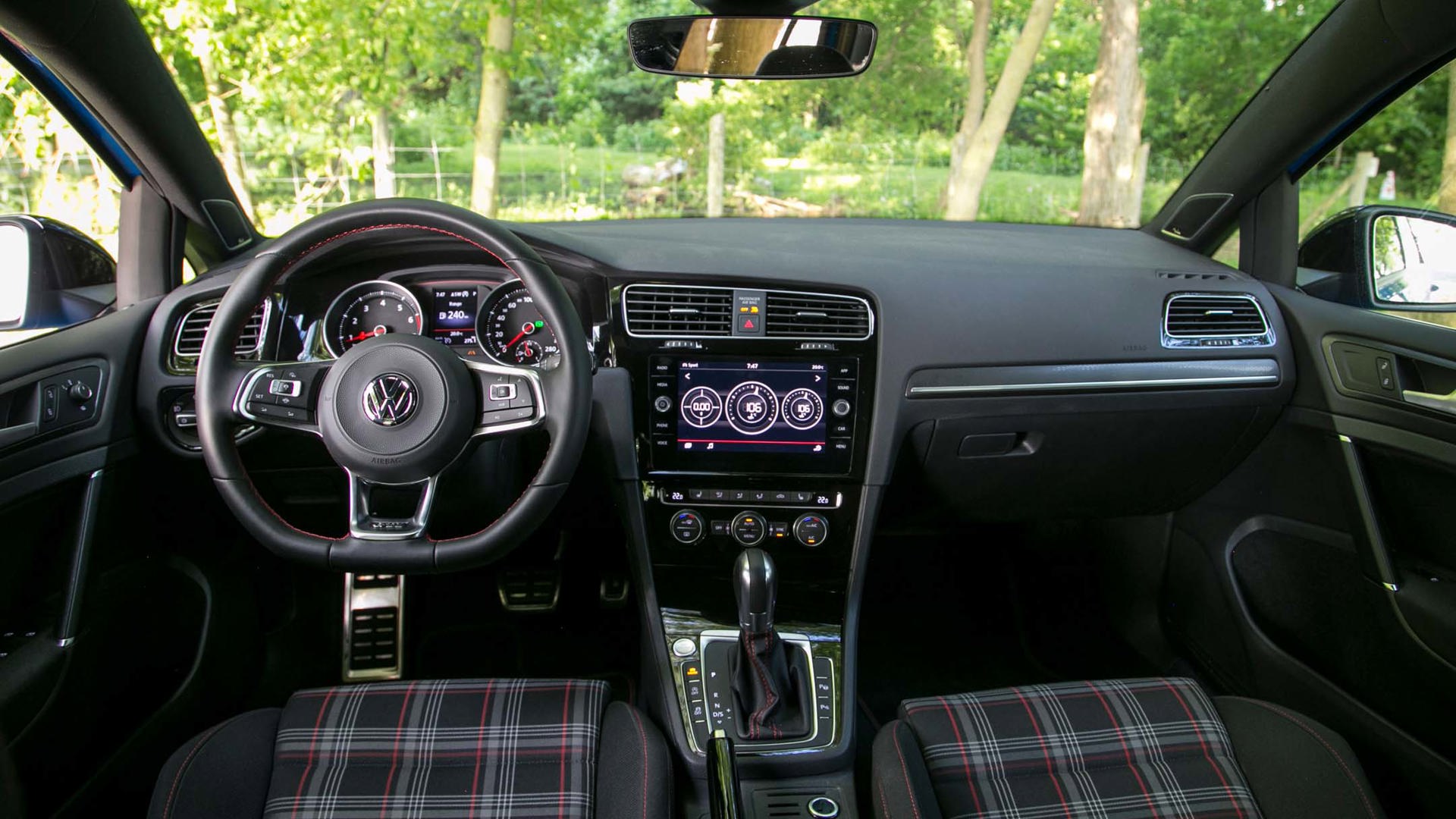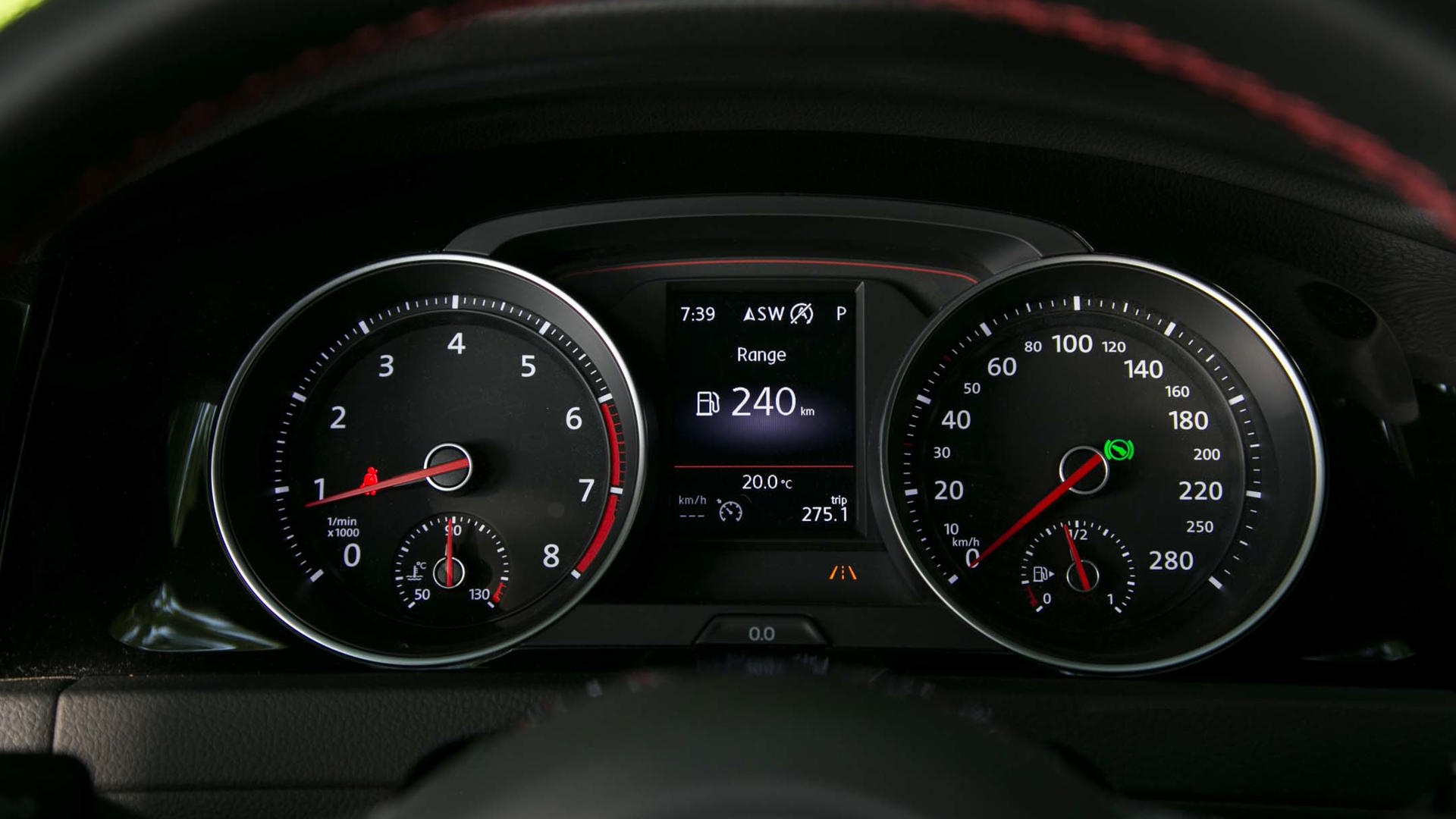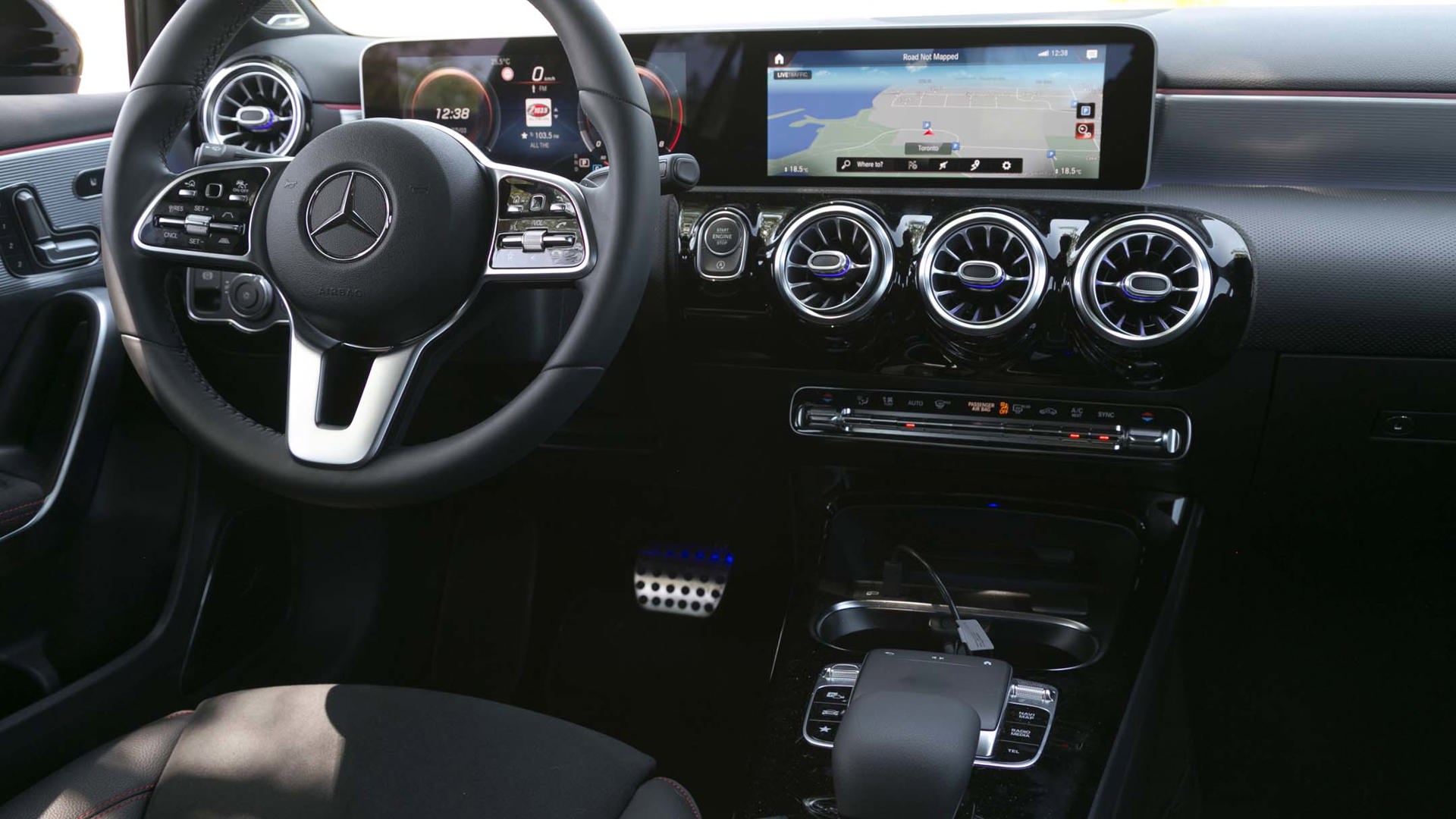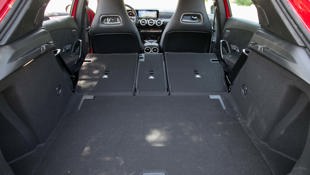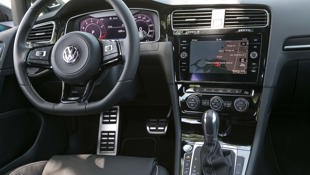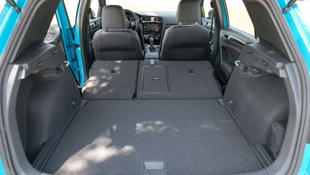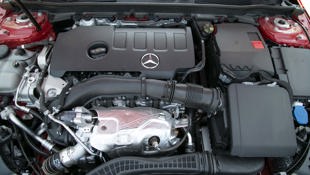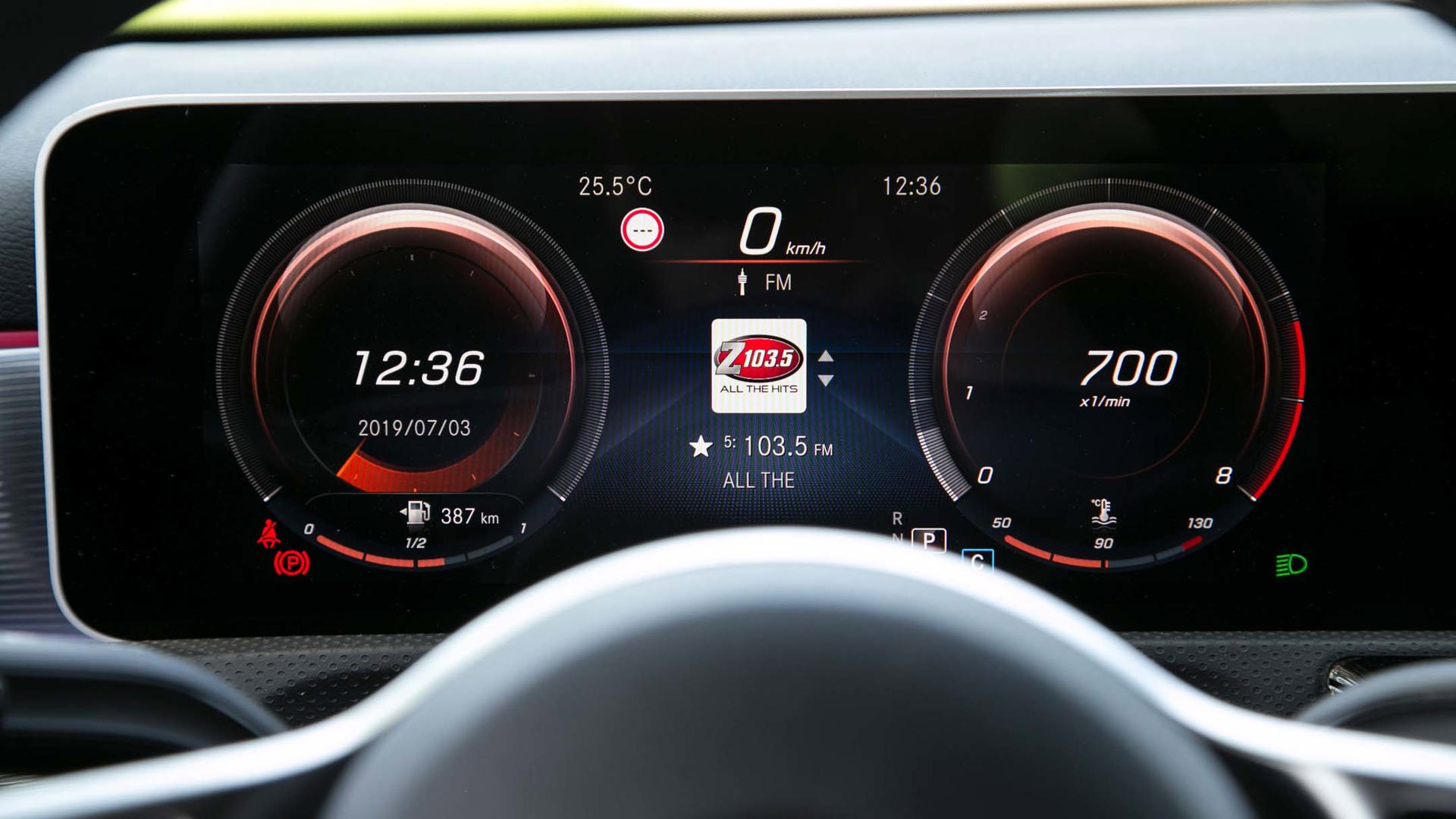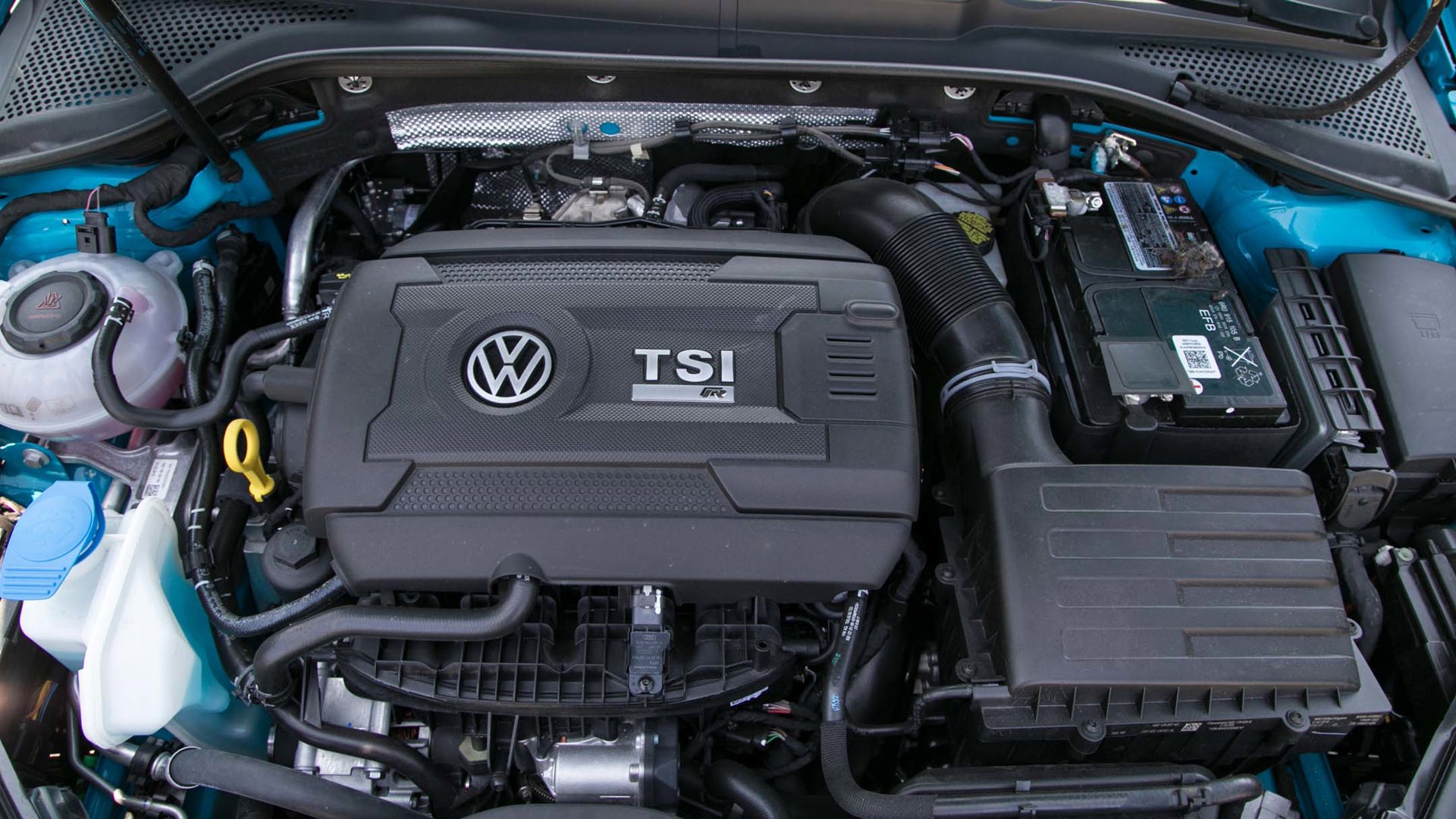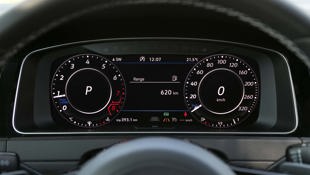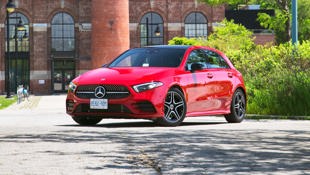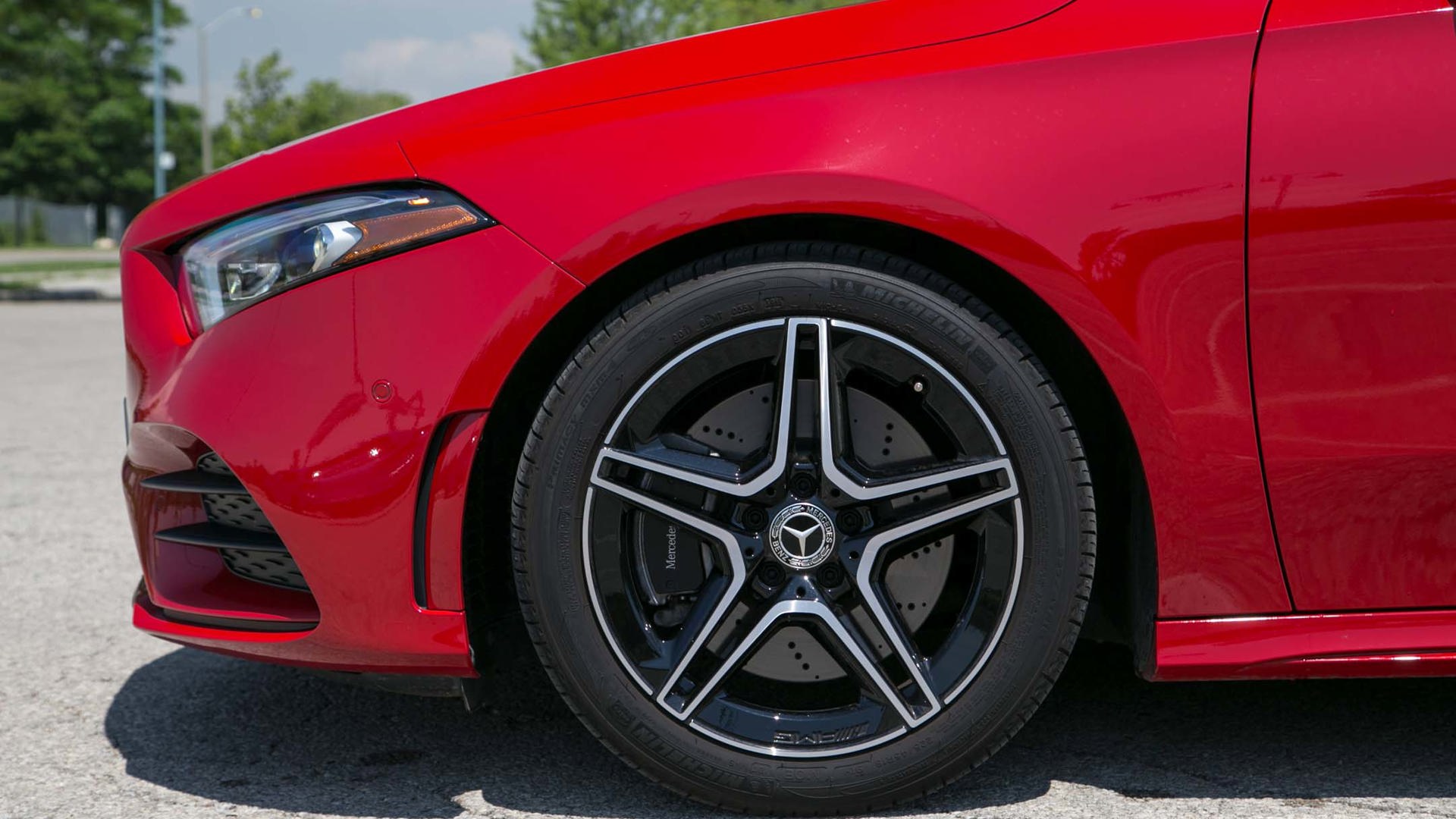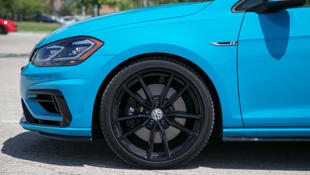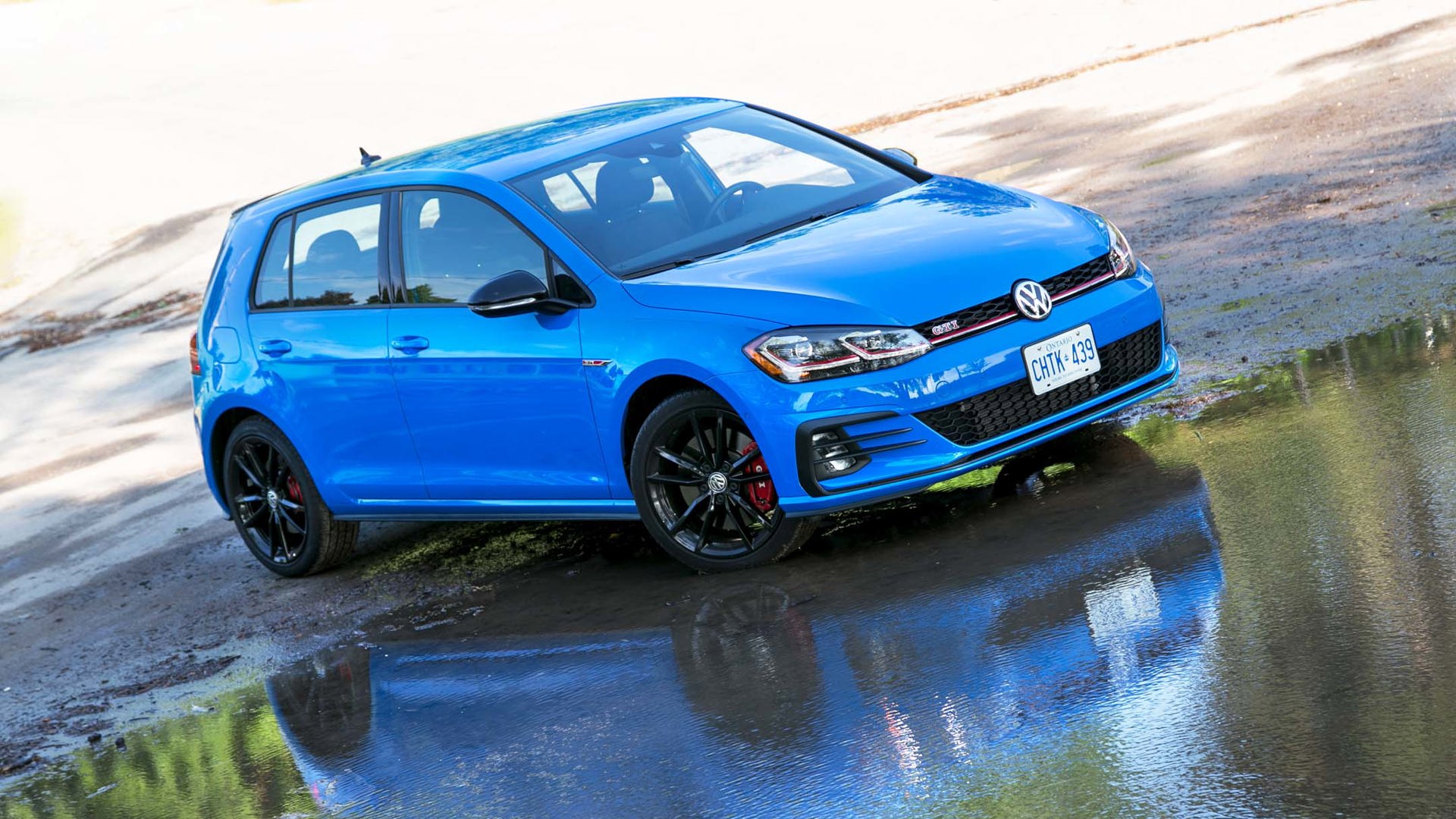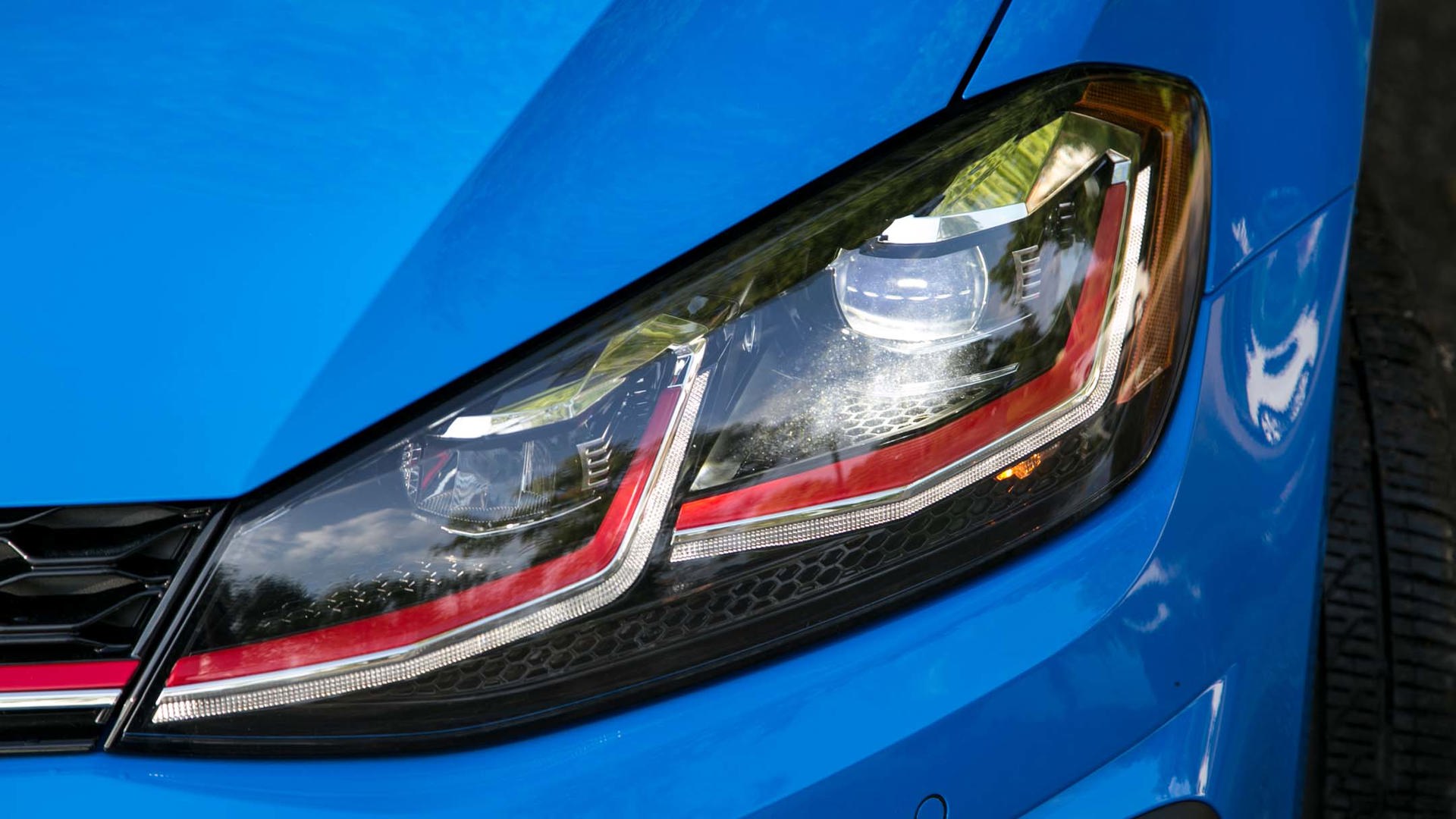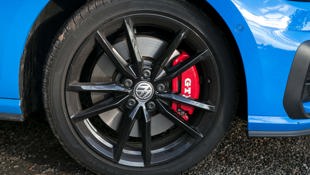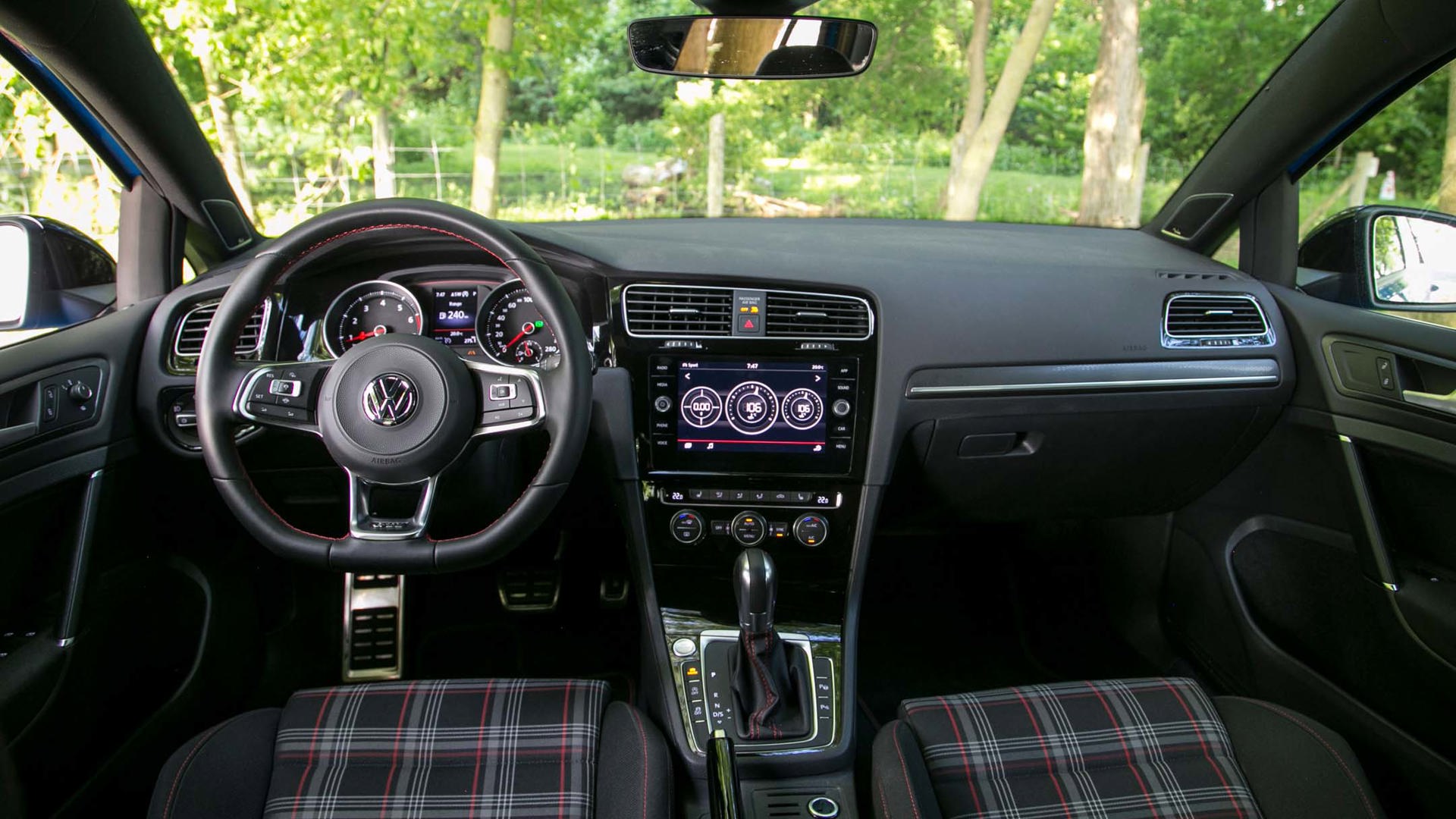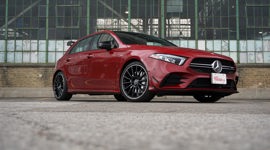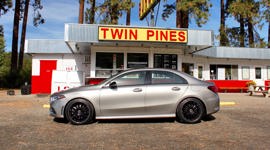Comparison Data
|
2019 Mercedes-Benz A 250 4Matic Hatchback
|
2019 Volkswagen Golf R DSG
|
2019 Volkswagen GTI Rabbit Edition
|
|---|---|---|
|
Engine Displacement
2.0L
|
2.0L
|
2.0L
|
|
Engine Cylinders
I4
|
I4
|
I4
|
|
Peak Horsepower
221 hp @ 5,500 rpm
|
288 hp @ 5,400 rpm
|
228 hp @ 4,500 rpm
|
|
Peak Torque
258 lb-ft @ 1,800 rpm
|
280 lb-ft @ 1,800 rpm
|
258 lb-ft @ 1,500 rpm
|
|
Fuel Economy
9.9/7.0/8.6 L/100 km cty/hwy/cmb
|
10.2/7.9/9.2 L/100 km cty/hwy/cmb
|
9.6/7.5/8.6 L/100 km cty/hwy/cmb
|
|
Cargo Space
370 / 1,210 L seats down
|
645 / 1,492 L seats down
|
493 / 1,520 L seats down
|
|
Base Price
$37,990
|
$43,895
|
$35,395
|
|
A/C Tax
$100
|
$100
|
$100
|
|
Destination Fee
$2,450
|
$1,645
|
$1,645
|
|
Price as Tested
$51,040
|
$50,690
|
$38,890
|
|
Optional Equipment
$10,500 – Navigation Package $1,000; Night Package $2,000; Premium Package $2,950; Technology Package $1,600; 360 Camera $650; Burmester Surround Sound $700; Active Parking Assist $900; Heated Steering Wheel $250; Power Adjustable Passenger Seat $450
|
$5,050 – Driver Assistance Package $1,460; Black Styling Package $595; Special Colour Program $2,995
|
$1,750 – Driver Assistance Package Plus $1,750
|
We, as Canadians, should be proud of ourselves for many reasons. We’re a congenial, smart, and likable bunch for the most part, and a lot of us have better taste in cars than our southern counterparts.
Mercedes-Benz’s current product lineup backs up this claim with a couple of notable offerings found here that aren’t available to our American friends. The first is the brilliant C-Class wagon. The other is half of our comparison test here, the A-Class Hatchback.
We can see these cars for the smart, stylish, and fun characters they are, not unlike Volkswagen’s adored Golf R, a car we consider the A 250 4Matic’s obvious alternate.
And while it may seem a little one-sided to pit the People’s Car against the three-pointed star, consider this: they’re both all-wheel-drive, turbocharged four-cylinder hatchbacks that, as tested, are priced within a few hundred bucks of each other.
Here’s what else you should know about these two…
Styling
Taking a page out of the books of the premium German car brands, Volkswagen offers its Golf R in a few standard colours, but makes available a palette of 50 more outrageous paint schemes as well, including the “’91 Blue” found on our test car. It’s an eye-catching look, especially with the Black Styling Package option, but together these options add an eye-watering $3,500 to the bottom line.
Even without that bit of flamboyance, the Golf R’s expression is a blend of quiet aggression and simple classiness, and really is the pinnacle of the boxy hatchback design that the Golf R / GTI has successfully done for decades.
The Mercedes is longer and lower, giving it a sleeker appearance. Its hatchback isn’t as square as the VW’s, and looks a bit odd from the front three-quarter view – as if someone sliced off the back of the sedan – but the front is pure, contemporary Mercedes, and that’s going to appeal to a lot of folks, especially with that big badge on the nose.
Inside, the Volkswagen is handsome, but its traditional style looks seriously dated compared to the Mercedes’ more flamboyant dashboard.
Managing Editor Michael Bettencourt was more critical of the Golf R’s interior design, suggesting it felt like a $30,000 car, not one costing nearly $50K. By comparison, he appreciated the slick-looking pair of screens that comprise most of the A 250’s instrument panel and central console.
One gripe about the A 250’s interior style: the large sections of high-gloss black plastic trim might look sexy in photographs, but day-to-day they’re wholly impractical, collecting dust, smudges and finger prints; and making the interior look pretty grungy, pretty quick.
Mercedes-Benz A 250: 8
Volkswagen Golf R: 7.5
Features
Cars costing upwards of fifty-large should be well-equipped, and these two are. They’ve got plenty of the expected accoutrements, from adaptive cruise control to LED headlights to excellent sound systems (Volkswagen’s Fender-branded system and Mercedes’ optional Burmeister unit are both loud, crisp, and clean-sounding).
The Golf R has a leather-clad interior, while the A 250 offers up a faux-suede textile, but Volkswagen doesn’t offer any Golf Rs here with a sunroof of any sort. Our A 250 had a huge, panoramic glass roof that helped brighten the cabin, plus a heated steering wheel, and even active parking assist functionality. That last feature we could certainly do without, but it’s all there for what Mercedes charges.
Mercedes-Benz A 250: 8
Volkswagen Golf R: 7.5
User Friendliness
While the Golf R’s interior gives up a bit of flash in the style category, it’s a paragon of functionality. The infotainment screen is a large, touchscreen affair with redundancy buttons for quick-access menu functions. The climate controls are operated with large knobs, and secondary operations are managed with a set of buttons flanking the traditional shifter stalk. Its square-bottom steering wheel has sensibly oriented buttons to operate the infotainment and cycle through the wealth of information available in the gauge screen. Everything here is done for function, even if it comes at the expense of a bit of fashion.
The A 250 gives nearly a two-foot-wide swath of digital screen space to present all sorts of information to the driver in a bright, graphic-rich environment. The latest Mercedes-Benz User Experience (MBUX) system is a brilliantly polished infotainment gem. The majority of the centre console is dominated by the hand-rest and large touchpad to operate the functions on the primary screen. Better though, is how Mercedes has integrated tiny touchpads into the thumb spokes of the steering wheel, enabling operation of both screens.
It’s a clever system and works quite well, and yet, still adds undue complexity versus VW’s simpler touchscreen functionality. Both cars have Apple CarPlay, but the MBUX system frequently glitched when Siri was tasked with reading my text messages to me, sounding like she was having a Max Headroom–style seizure.
Similarly, the climate controls are in a single line of lookalike buttons with small toggles for temperature control. It works fine, but it’s a bit fiddlier than the Golf’s setup.
With so many functions in a modern car, keeping it simple is key.
Mercedes-Benz A 250: 7.5
Volkswagen Golf R: 9
Comfort
That boxy profile of the Golf R makes for a more spacious cabin. Numerically, the VW’s rear seat space is slightly larger in both head- and legroom, though the taller glass area makes it feel significantly larger.
The Golf’s Recaro seats, while not cooled, are at least perforated, and on our hot, humid July test days, that little bit of breathability over the Benz’s Dinamica seats was appreciated. Both cars have heated seats.
The A 250’s seats offered decent comfort, but less adjustability than the Recaros, but the Benz’s ride was significantly better than the rather harsh Volkswagen’s. A product of its high-performance intentions, the Golf R’s suspenders are very stiff, even when the adaptive suspension setting is set to “Comfort”. In fact, with the Mercedes set to its sportiest drive mode, its suspension is about as cushy as the VW’s softest.
Mercedes-Benz A 250: 7
Volkswagen Golf R: 7
Practicality
In addition to the airier cockpit, another bonus of the boxy Golf R is a greater cargo hold. With the seats up, the Mercedes contains only 370 L, whereas the Volkswagen is rated to hold 645 L. Seats down, it’s a similar story with the A 250 at 1,210 L versus 1,492 L. But, these on-paper dimensions account for the squared off roofline affording more vertical volume. That can be useful for hauling bulky items, but the day-to-day usability of the A 250 Hatch’s cargo hold is great too, and the 40/20/40-split folding rear seat offers greater versatility than the 60/40 split in the Golf R.
The one-piece seat-and-headrest format of the A 250’s rear seats can make folding the seats down problematic if the front seats are set for tall occupants.
Mercedes-Benz A 250: 7.5
Volkswagen Golf R: 8
Power
The Golf R and A 250 4Matic are very closely aligned, mechanically. Both have 2.0-litre, turbocharged, four-cylinder engines under the hood. Both direct their power through seven-speed dual-clutch transmissions to all four wheels.
The personalities of the two drivetrains are significantly more different. The Mercedes sounds coarse and diesel-like from outside the car (similar to the C 300 we recently tested). Inside, however, very little engine noise intrudes into the cabin, even when the little Benz is being flogged. Mercedes’ history of building luxury cars comes through in the A 250’s cabin manners.
Conversely, as Volkswagen’s most sporting car, the Golf R makes no apologies for its throaty growl heard inside the cockpit. In fact, it’s enhanced for the driver’s auditory pleasure and sounds decent, if not melodic. It’s also packing a significantly larger punch with 288 hp at only 5,400 rpm, versus the A 250’s 221 hp at a similarly modest 5,500 rpm.
Both engines reach their peak torque at just 1,800 rpm – 258 lb-ft for the Mercedes and 280 lb-ft for the Volkswagen – but both cars exhibited some off-boost lag pulling away from a standstill that was exacerbated in the VW by its occasional reluctance to shift down to first gear.
The stifling warmth and humidity of our test days meant that both cars suffered from a bit of heat soak too, and felt less enthusiastic by mid-afternoon than they had during the cooler mornings.
Driven hard, the Golf R is obviously the quicker car; but the seat-of-the-pants experiences are not as far apart as the horsepower numbers might suggest. The Mercedes still has a satisfying kick to its turbo (Mercedes claims a 0–100 km/h time of 6.2 seconds) and is plenty fun zipping around town and squirting through traffic, and its transmission shifts just as eagerly and crisply as the VW’s DSG.
Mercedes-Benz A 250: 7.5
Volkswagen Golf R: 8
Driving Feel
The personalities differ in road manners and handling too. The Mercedes is a fun and sporty car in its own right, but it exhibits notably more body roll than the VW with its stiffer suspension.
Bettencourt noted that the Mercedes felt like it was cornering on its tippy-toes, and would be more easily upset in mid-corner bumps.
Both cars make good use of their all-wheel drive systems, apportioning power where it’s needed, when it’s needed, but the aggressive summer tires on the Golf R give the VW a more planted feel compared to the squishier all-seasons on the Merc. This also contributes to a sharper steering feel in the VW than the Mercedes, but that can also be tiring on long highway drives.
The Golf R’s brakes have a much stronger initial bite than the A 250’s, but here again, there’s nothing wrong with the Benz’s brakes, they just aren’t as aggressive as the VW’s.
In a track setting, the far sportier Golf R would likely create a serious gap ahead of the A 250, but in the real world, the Benz, in sport mode, represents a perfect blend of comfort, sportiness, fun, and practicality with quick shifts, exciting throttle response, and enough power to put a smile on the driver’s face, without the punishment of a track-ready ride stiffness.
Mercedes-Benz A 250: 7
Volkswagen Golf R: 8
Safety
The Golf R and A 250 are both well equipped to keep occupants safe: good outward visibility, agile handling, all-wheel-drive traction, and great headlights to help spot trouble ahead.
Each manufacturer has provided plenty of active safety functionality too, with autonomous braking and lane-keeping assistance, plus a solid structure and litany of airbags.
Mercedes-Benz A 250: 9
Volkswagen Golf R: 9
Fuel Economy
All the Golf R’s sportiness and higher engine tune comes at a cost at the gas station. The Volkswagen rates about 1 L/100 km worse in each City, Highway, and Combined ratings, a difference that’s likely to amount to a couple hundred bucks per year for most drivers. It should be noted that both of these cars are more efficient than most all-wheel-drive compact SUVs.
Both cars require premium unleaded fuel.
Mercedes-Benz A 250: 8.5
Volkswagen Golf R: 8
Value
When climbing out of a “regular” Volkswagen Golf that costs less than $30,000 and into a Golf R, most drivers probably won’t get what makes the sportier car worth $18,000 more. After a spirited drive, however, the snarling R redeems itself, especially compared to the crass-looking sporty offerings from Honda or Subaru.
The refinement level of the Golf R exceeds most of its competition by a notable margin. The Mercedes-Benz A 250 isn’t like most of the Golf’s usual competitors, and it presents as a better-equipped, coddling, and more luxurious choice in the compact hatchback field.
Both of our test cars were optioned up with at least four to five thousand bucks’ worth of options we’d happily forego to create an even better value, settling around the $43,000 mark.
Picking a value leader here simply depends on a buyer’s preference for a sporty versus luxurious driving experience.
Mercedes-Benz A 250: 7.5
Volkswagen Golf R: 7.5
Conclusion
In tallying up the scores, there are only a couple of points separating these two. As similar as they are on paper, their driving personalities represent two completely different machines. For buyers who appreciate state-of-the-art tech, luxury, style, and the cachet of the three-pointed star, the comfortable new A 250 4Matic is a no-brainer choice.
Those who plan to partake in a few track days, or just really love the thrust and sound of a more aggressive machine without going full boy-racer style, will want the Golf R.
We would be truly happy to park either one of these cars in our personal garages, but the Golf R just felt like home with its airy cockpit, simple controls, greater cargo space – and, being enthusiasts, its greater driving performance.
Sidebar: 2019 Volkswagen GTI Rabbit Edition
For less than $36,000, Mercedes offers a front-wheel-drive version of its A 250 Hatchback – a price that’s very close to Volkswagen’s more-affordable sporty Golf: the venerable GTI.
With 228 hp, the GTI’s 2.0-litre, turbocharged four-cylinder is tuned closer to the Benz’s output than the Golf R, but in spending a weekend driving around in a beautiful Cornflower Blue Rabbit Edition with an seven-speed DSG transmission, I was left somewhat underwhelmed. It’s still adequate to move the GTI along smartly, but this bunny is lacking some of the friskiness I recall from GTIs I’ve driven in the past.
I’ve been a fan of the GTI for years, and much of what’s to love about the Golf R – the spacious interior, sensible controls, and even the adaptive suspension – are still present here, despite costing significantly less. It’s even got the sensible styling of the Golf R, plus the polarizing Clark patterned seats that I absolutely adore, but found most of my social circle abhors.
But the GTI isn’t as serious a performer as the R, and VW shows that even in its selectable drive modes. The R has a “Race” mode; the GTI has a “Sport” mode. The GTI also keeps the traditional gauges compared to the R’s all-digital display.
Where the GTI was once a raucous version of the Golf (or Rabbit), it’s now grown into just a slightly more sporting version; and though a capable performer, it has been refined to the verge of becoming boring. Those looking for a more engaging drive should opt for a Veloster N, whereas the A 250 represents the more luxurious and comfortable hatchback alternative for roughly the same cost.

